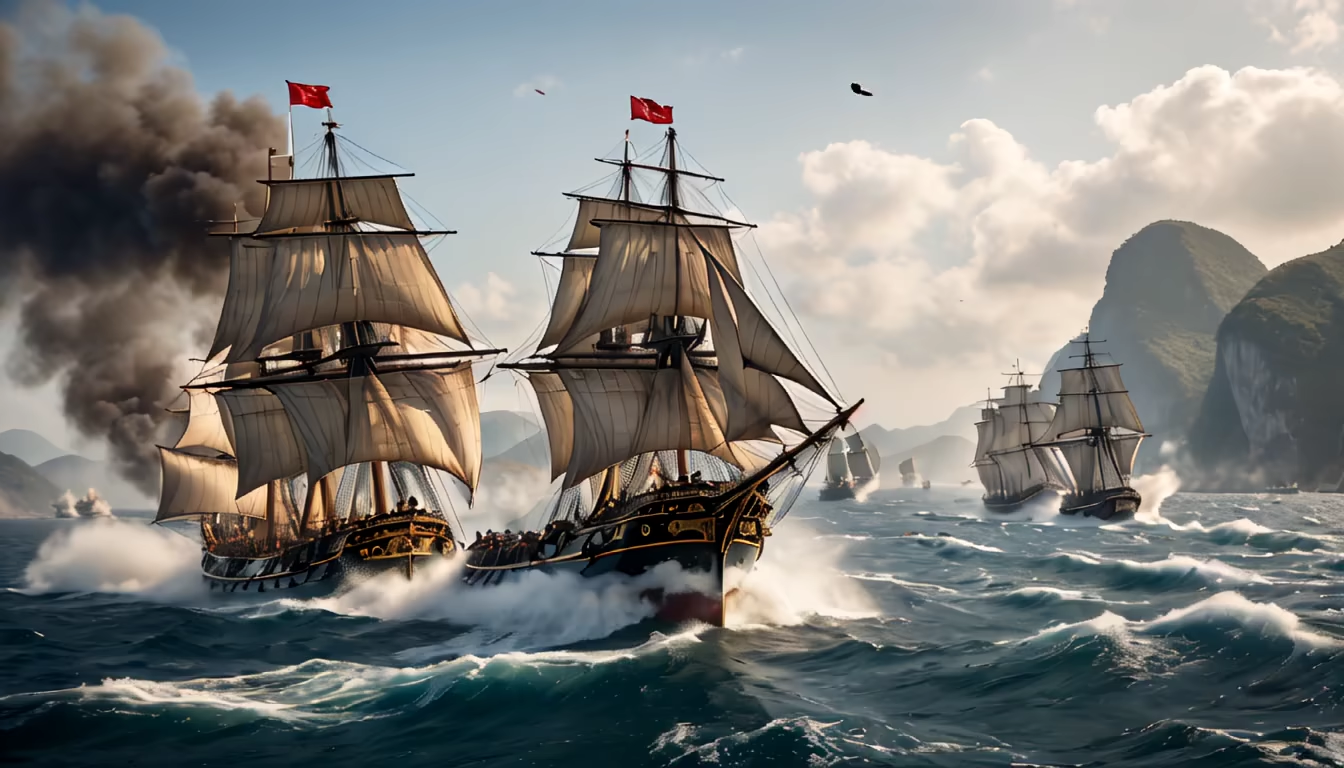Prompt: The Opium Wars of the 19th century were pivotal conflicts that stemmed from the opium trade between China and Western powers. Investigate the intricate dynamics of the opium trade during the Opium Wars. Analyze the mechanisms by which the opium trade became a catalyst for conflict between China and Britain. Explore the economic, political, and social ramifications of the opium trade on both sides, considering the British pursuit of profit and the Chinese efforts to suppress the trade. Examine how the opium trade transformed diplomatic relations, contributing to a significant imbalance in power dynamics. Evaluate the sequence of events during the Opium Wars, highlighting the role of the opium trade as a primary cause and the subsequent implications for global trade, sovereignty, and international relations. Delve into the perspectives of key stakeholders involved and consider the long-term consequences of these conflicts on the affected nations and global perceptions of trade and imperialism.
Style: Cinematic


Prompt: In the 19th century, China faced a profound internal struggle in its attempt to suppress the opium trade. Explore the motivations and efforts of the Chinese government to combat the opium epidemic within their borders. Investigate the societal and cultural impacts of opium addiction on the Chinese population. Examine the measures implemented by Chinese authorities to suppress the opium trade and curb addiction, considering both the successes and challenges they encountered. Analyze the political, economic, and social factors that fueled China's determination to halt the opium trade despite significant pressure from Western powers. Explore the clash between China's desire for social stability and sovereignty and the commercial interests of Western traders. Reflect on the cultural and moral dimensions of China's struggle against the opium trade and its significance in shaping China's relationship with the outside world.
Style: Cinematic
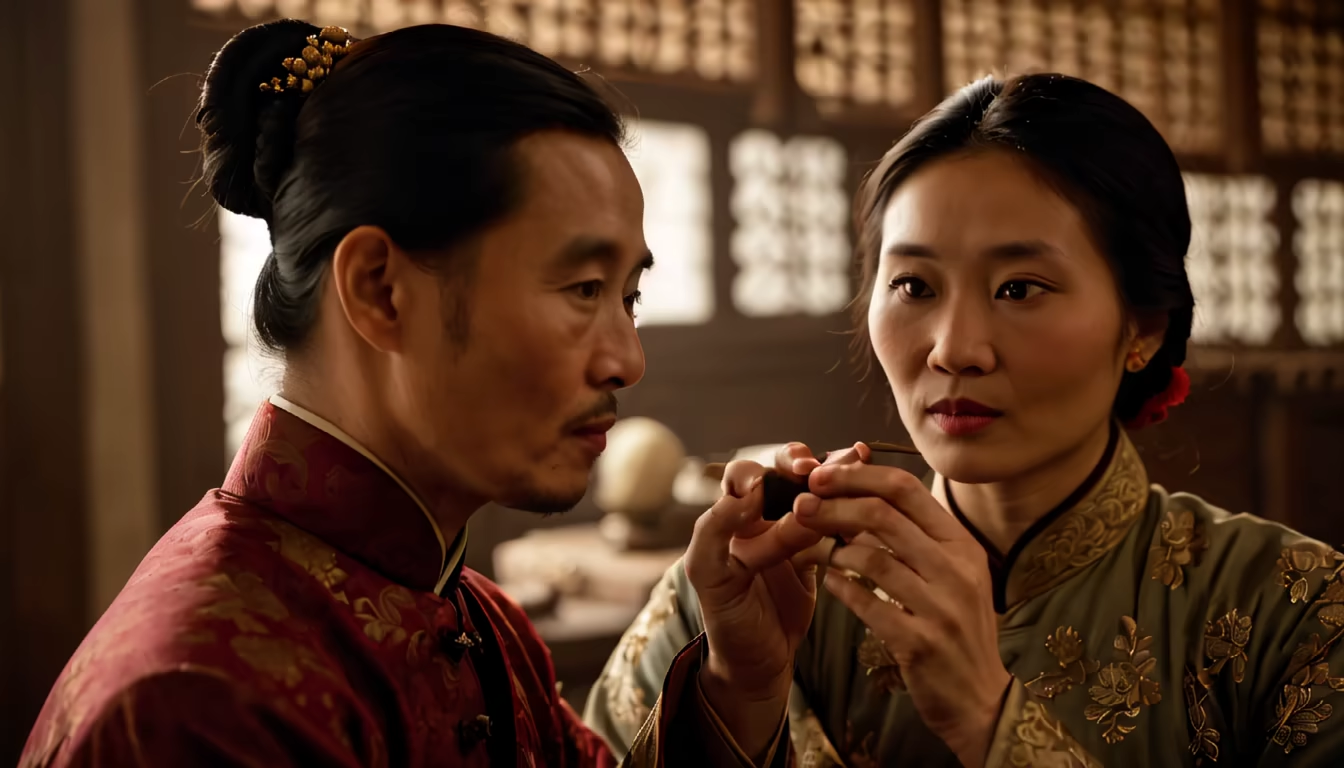

Prompt: The opium trade in the 19th century significantly altered international relations, sparking what would become known as the First Opium War. Delve into the complex web of events and interests that led to the outbreak of this conflict. Explore the socio-economic factors behind the rapid growth of the opium trade between China and Western powers. Investigate the clash between Chinese efforts to prohibit the trade and the lucrative interests of British merchants exporting opium into China. Analyze the diplomatic tensions and power dynamics between China and Britain that culminated in armed conflict. Consider the perspectives of both sides and the sequence of events that ultimately gave rise to the First Opium War. Evaluate the consequences and long-term implications of this conflict on global trade, diplomatic relations, and the sovereignty of nations involved.
Style: Photographic
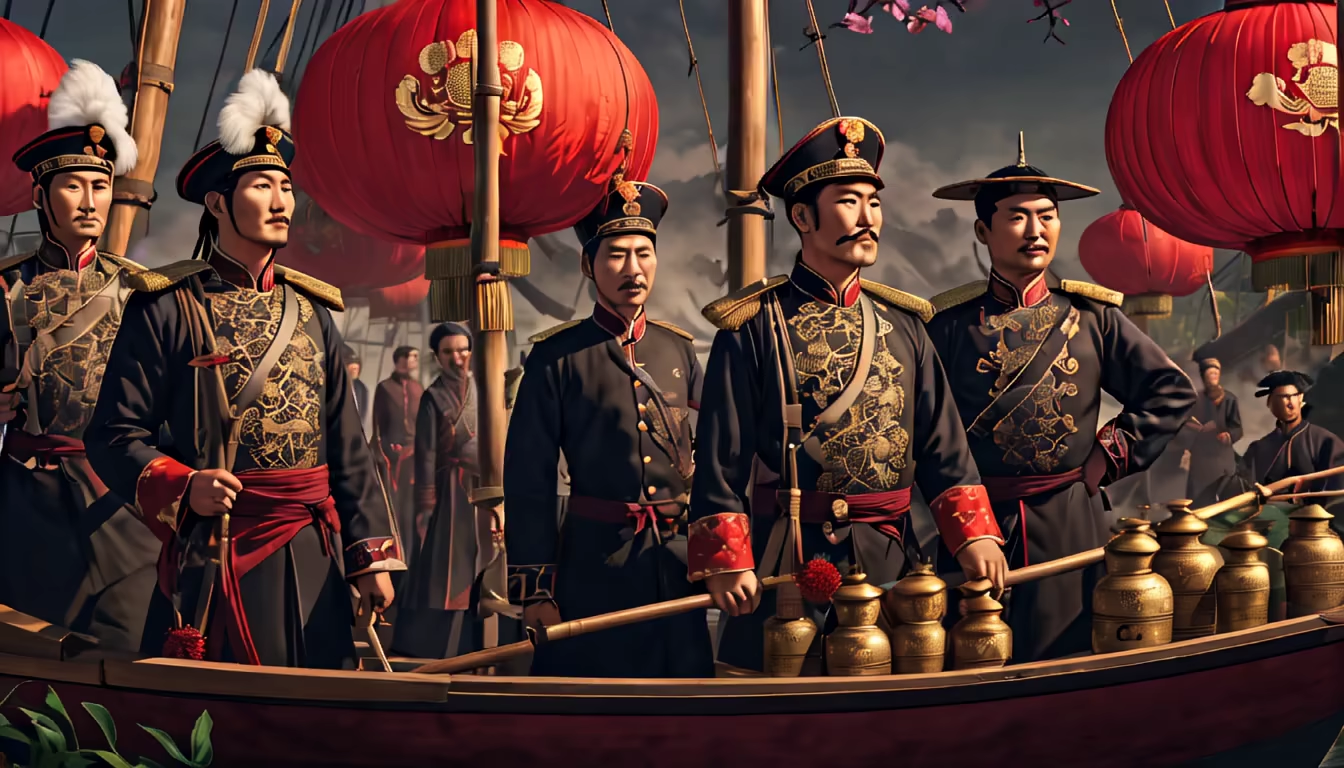
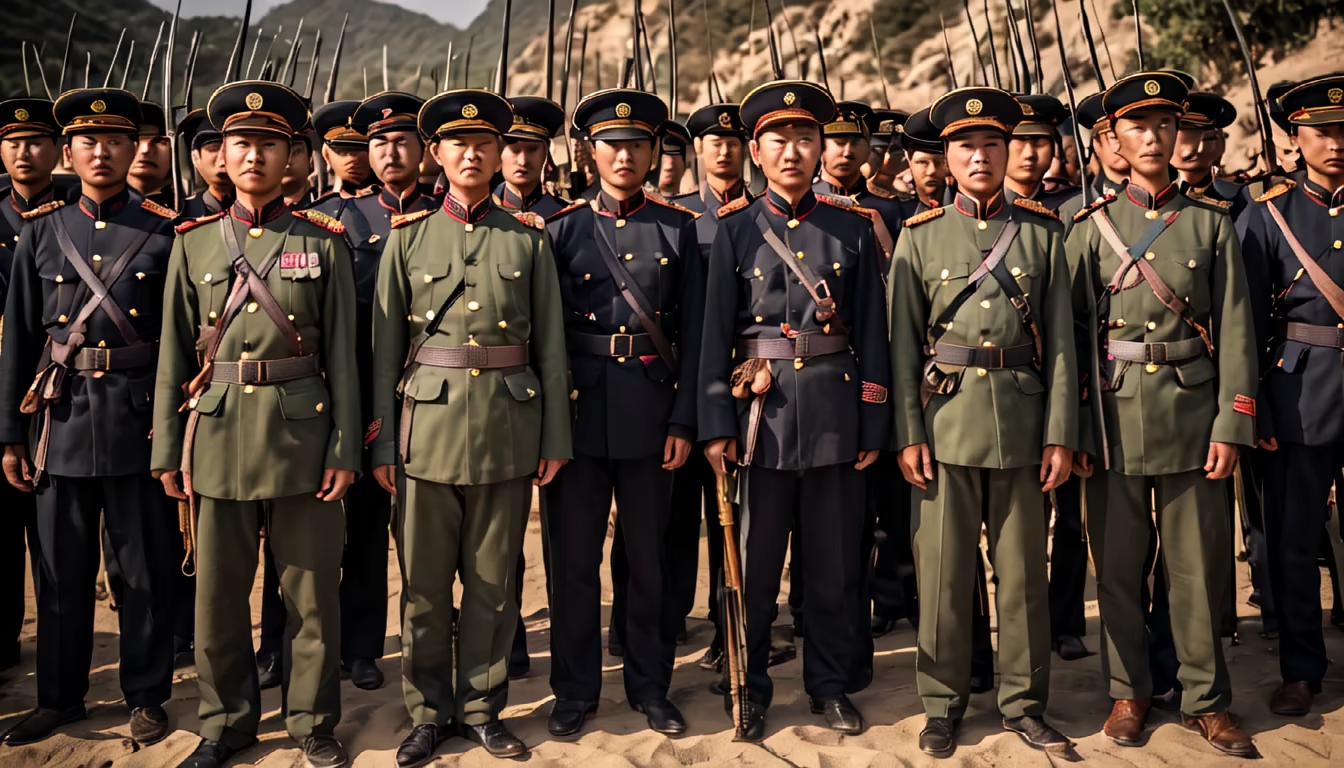
Prompt: The opium trade of the 19th century was a contentious issue that significantly influenced international relations. Explore the British involvement in the opium trade and its impact on relations with China. Investigate how the opium trade became a source of considerable profits for British merchants and traders. Delve into the economic motivations behind Britain's active participation in the opium market despite opposition from the Chinese authorities. Analyze the social, economic, and political repercussions of these profits on both the British economy and their relations with China. Consider the ethical dimensions of profiting from a trade that led to addiction and social devastation in China. Examine the role of profit-driven motives in exacerbating tensions and contributing to the conflict arising from the opium trade. Evaluate the implications of prioritizing economic interests over ethical considerations in international relations.
Style: Photographic
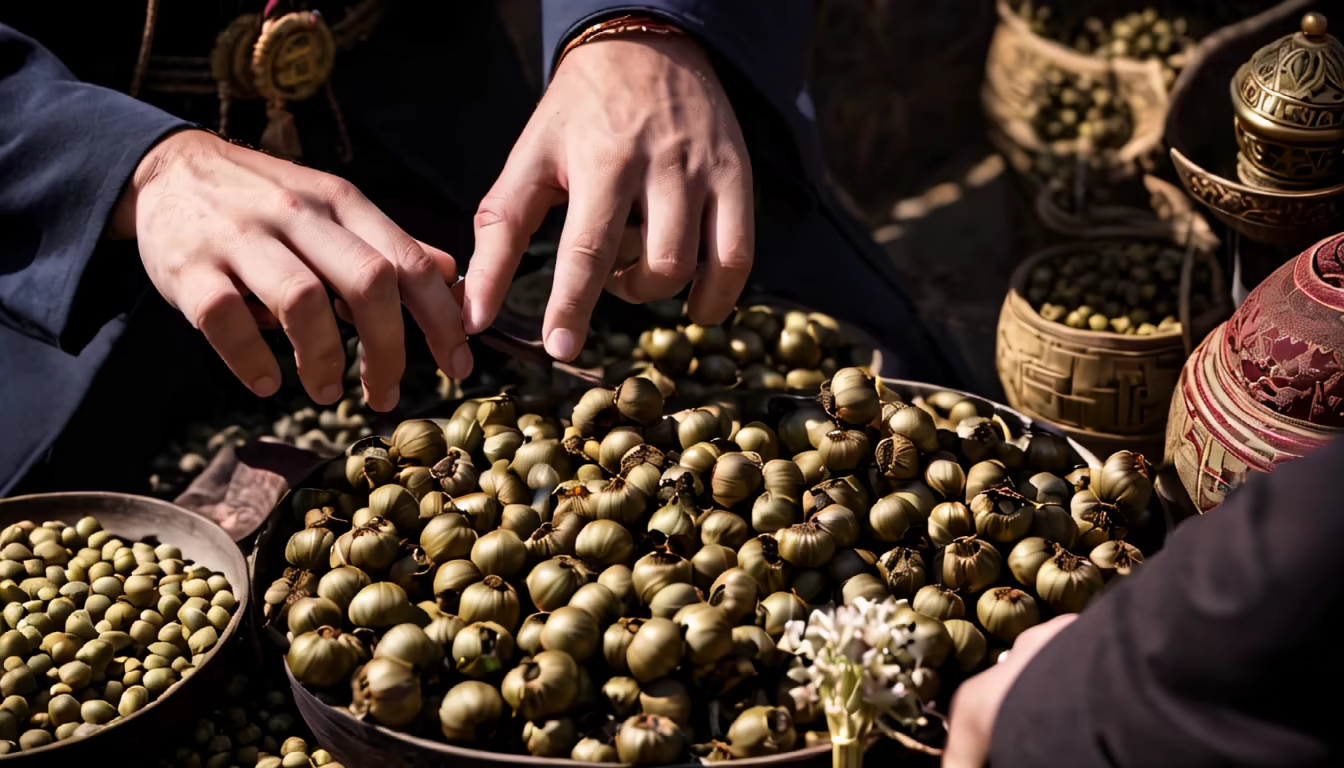
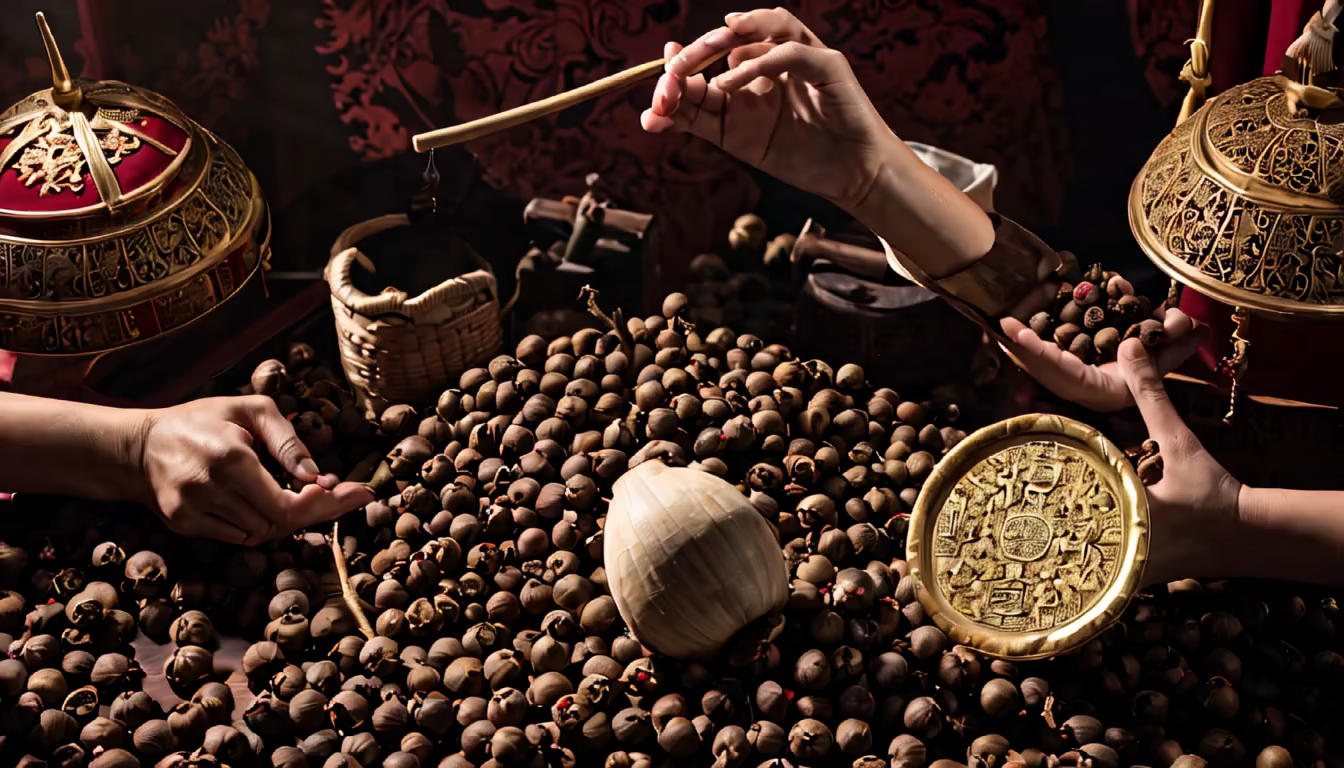
Prompt: In the 19th century, China faced a profound internal struggle in its attempt to suppress the opium trade. Explore the motivations and efforts of the Chinese government to combat the opium epidemic within their borders. Investigate the societal and cultural impacts of opium addiction on the Chinese population. Examine the measures implemented by Chinese authorities to suppress the opium trade and curb addiction, considering both the successes and challenges they encountered. Analyze the political, economic, and social factors that fueled China's determination to halt the opium trade despite significant pressure from Western powers. Explore the clash between China's desire for social stability and sovereignty and the commercial interests of Western traders. Reflect on the cultural and moral dimensions of China's struggle against the opium trade and its significance in shaping China's relationship with the outside world
Style: Photographic

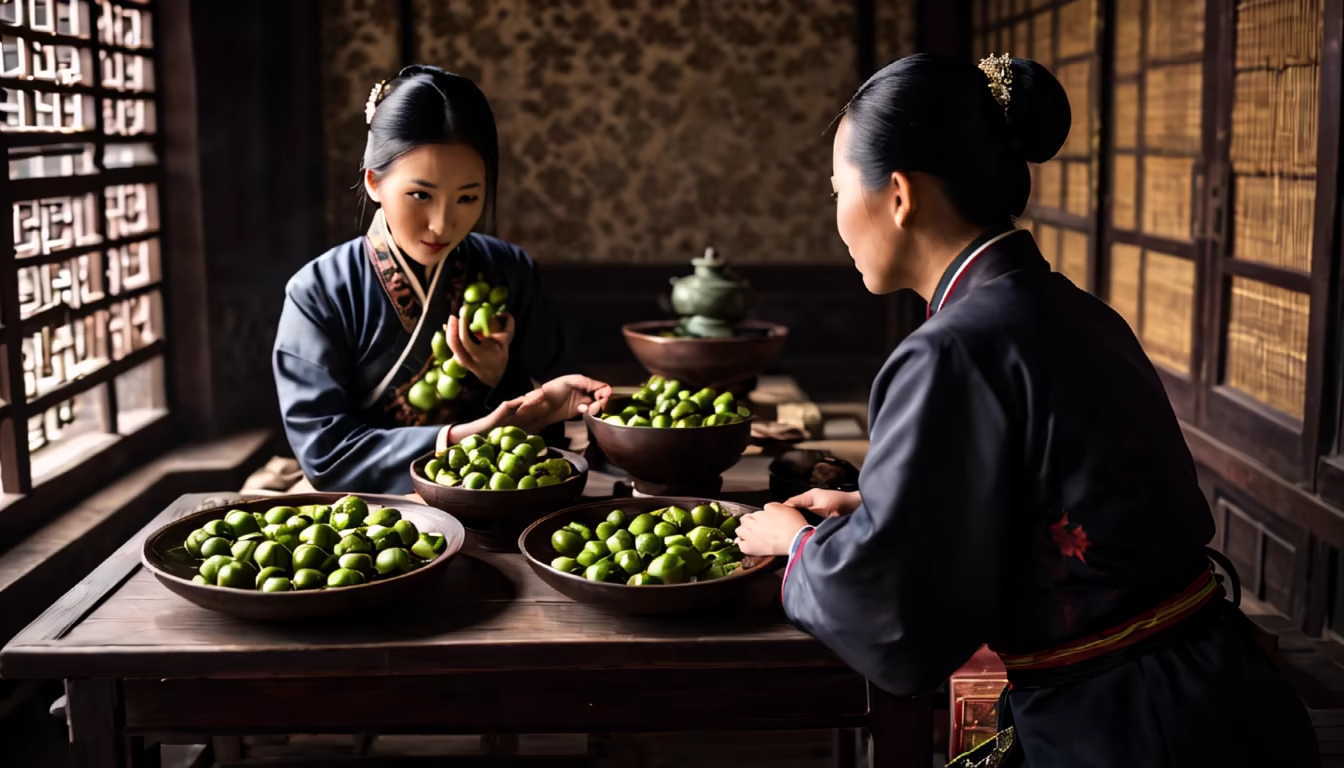
Prompt: In the early 19th century, China faced a devastating crisis with the widespread opium trade. The Chinese government took bold steps to curb this trade, recognizing the destructive impact of opium addiction on its people and society. Craft a narrative exploring the multifaceted efforts initiated by the Chinese authorities to ban the opium trade. Consider the historical, social, and economic implications of this decision. Highlight the challenges faced by the government in implementing these measures and the ways in which they aimed to restore balance and protect their population from the ravages of addiction. You could delve into the socio-political landscape of the time, the global influences on the opium trade, and the strategies employed by the Chinese government to combat this crisis.
Style: Photographic

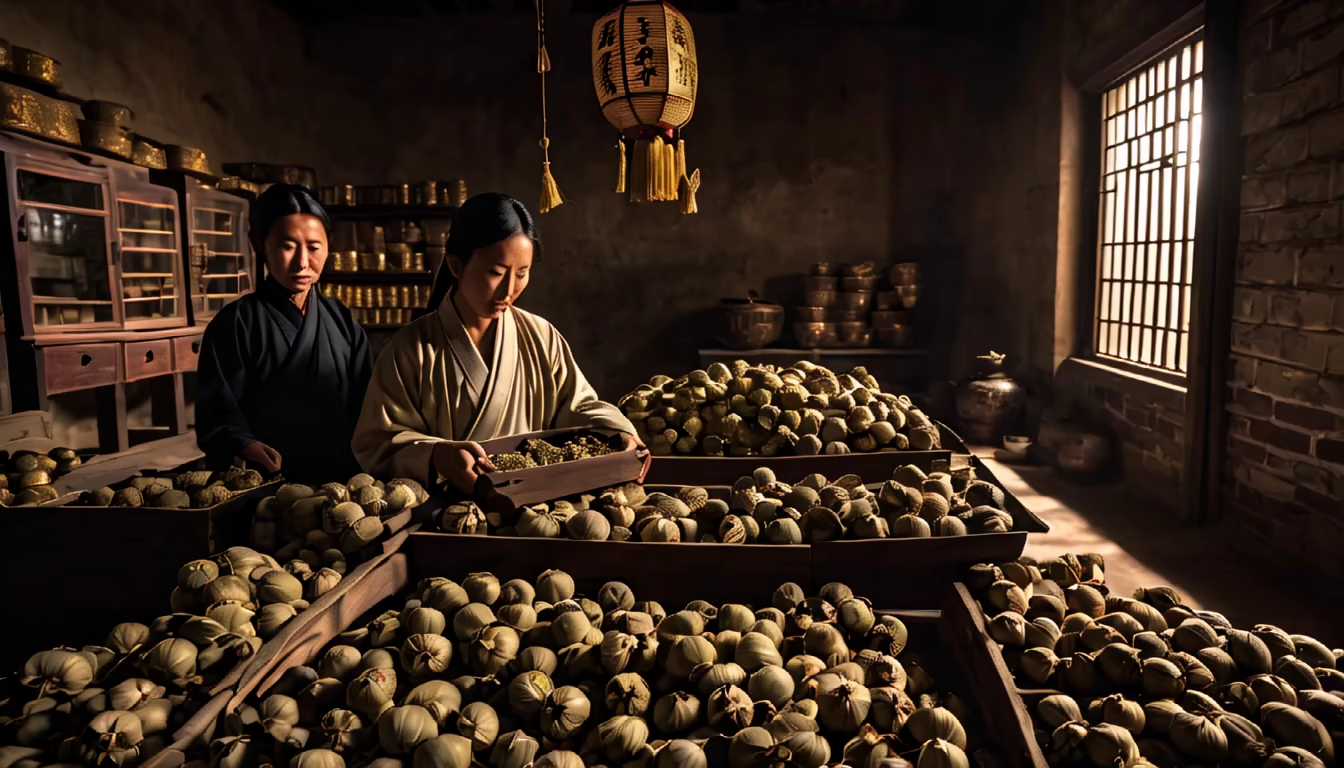
Prompt: Explore the pivotal role of Commissioner Lin Zexu in combating the opium trade when dispatched by the Chinese Emperor to Guangdong Province, the heart of the opium trade. Delve into Lin Zexu's background, beliefs, and the strategies he employed to staunchly oppose the opium trade. Analyze the socio-political climate of Guangdong Province and the challenges faced by Lin Zexu in his efforts to eradicate opium. Investigate the confrontations and negotiations between Lin Zexu and British merchants, considering the clash of ideologies regarding trade, morality, and sovereignty. Examine the impact of Lin Zexu's actions on both the Chinese government's stance on the opium trade and the perception of Western powers. Assess the significance of Lin Zexu's mission and the legacy of his anti-opium efforts in shaping Chinese history, international relations, and the discourse on trade ethics.
Style: Cinematic
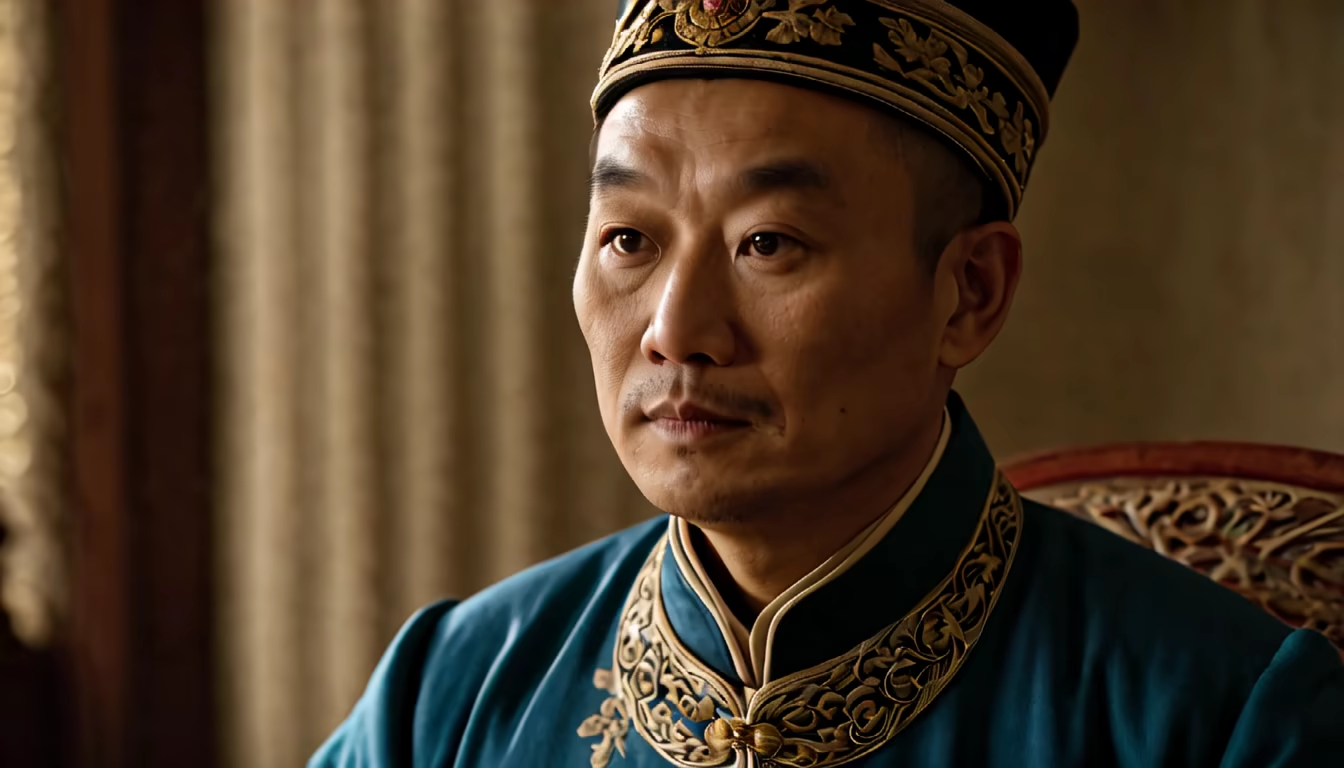
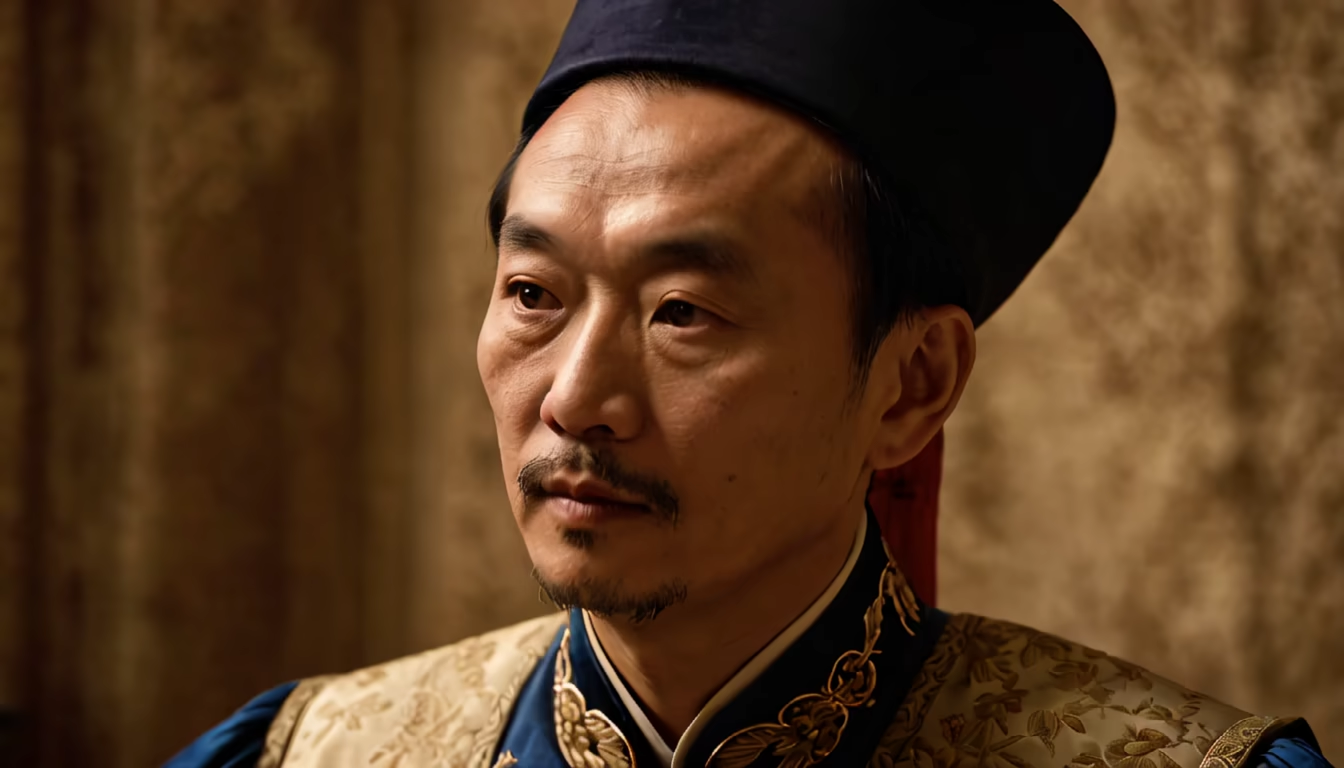
Prompt: FIRST OPIUM War served as a harrowing reminder of the destructive capability of modern weaponry and the devastating repercussions of misguided trade policies
Style: Cinematic

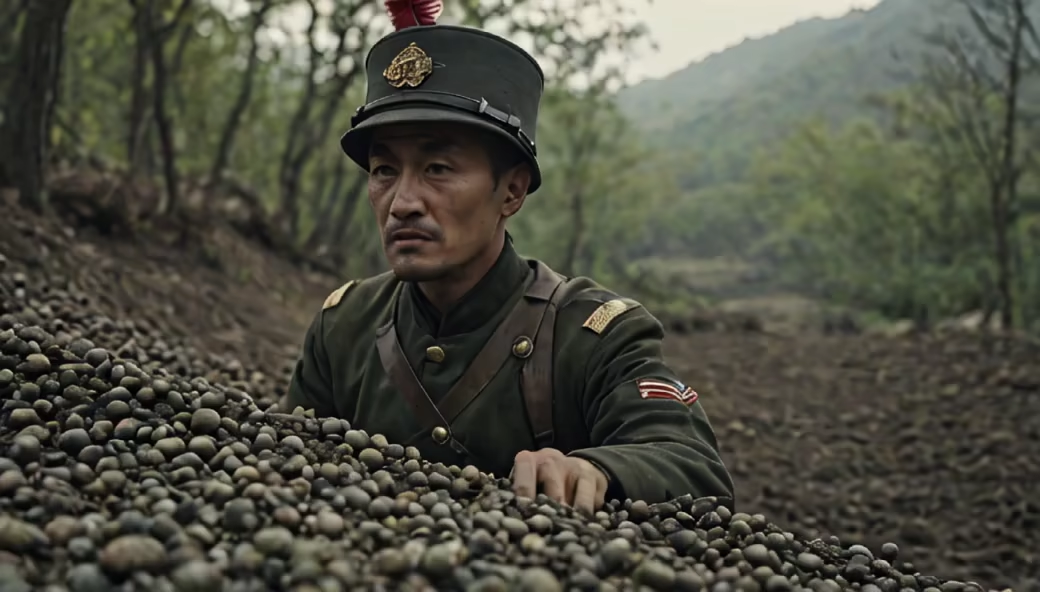
Prompt: An evocative visual portrays a dramatic maritime scene from the historical period of the Opium Wars. The image encapsulates the intensity of naval warfare during this time, showcasing a fierce confrontation between British and Chinese naval forces on the open sea. The foreground exhibits the tumultuous waters, roiled by the clash of warships, their sails taut against the wind. British war vessels, sleek and sturdy, engage in a strategic formation, cannons protruding from their sides, billowing smoke and fire as they exchange volleys with Chinese junks, adorned with colorful sails and intricate designs. The horizon is dominated by the vast expanse of the sea, with the sky painted in hues of orange and red from the setting sun, casting a fiery glow on the tumultuous scene. In the distance, the silhouettes of more ships approach, indicating the ongoing nature of the conflict and the continuous struggle for naval dominance. This image encapsulates the pivotal battles fought at sea during the Opium Wars, showcasing the high-stakes confrontations, technological disparities, and the crucial role of naval power in shaping the outcome of the conflicts between the British and Chinese forces.
Style: Cinematic
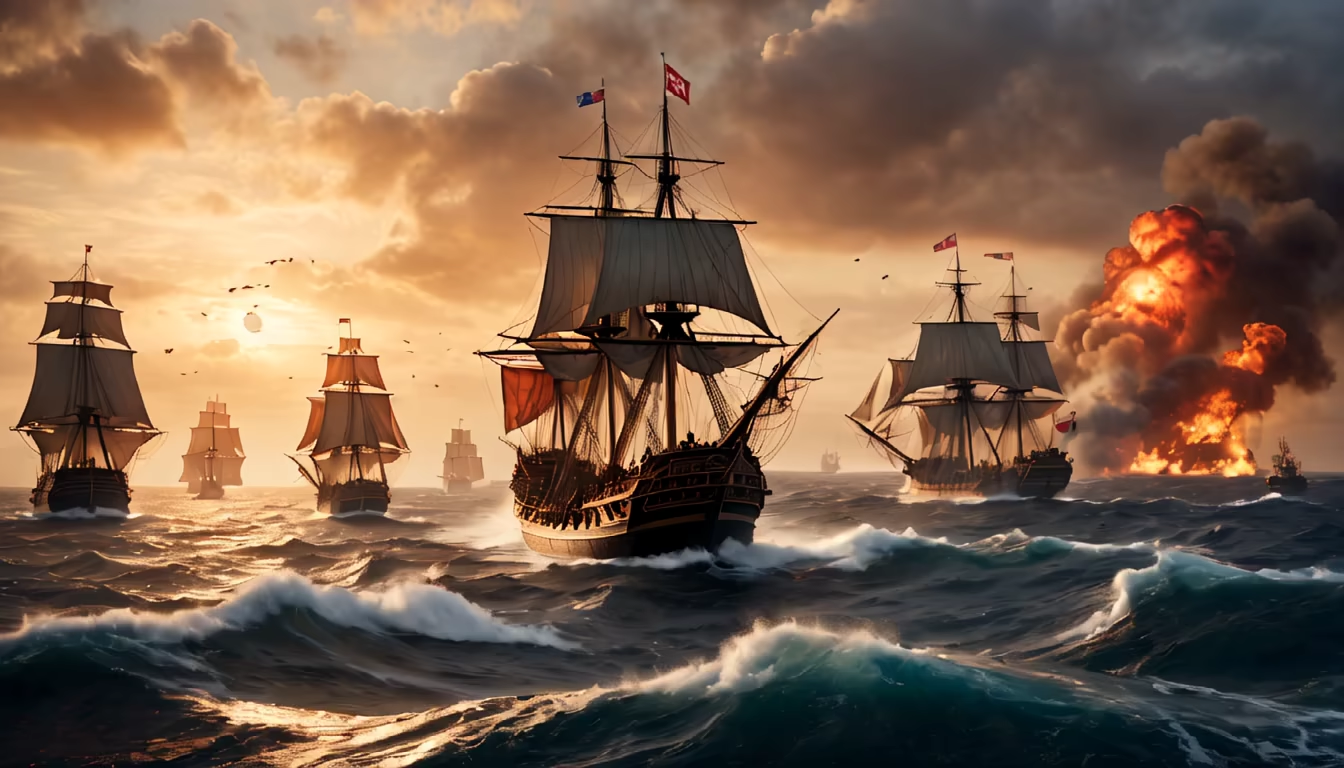
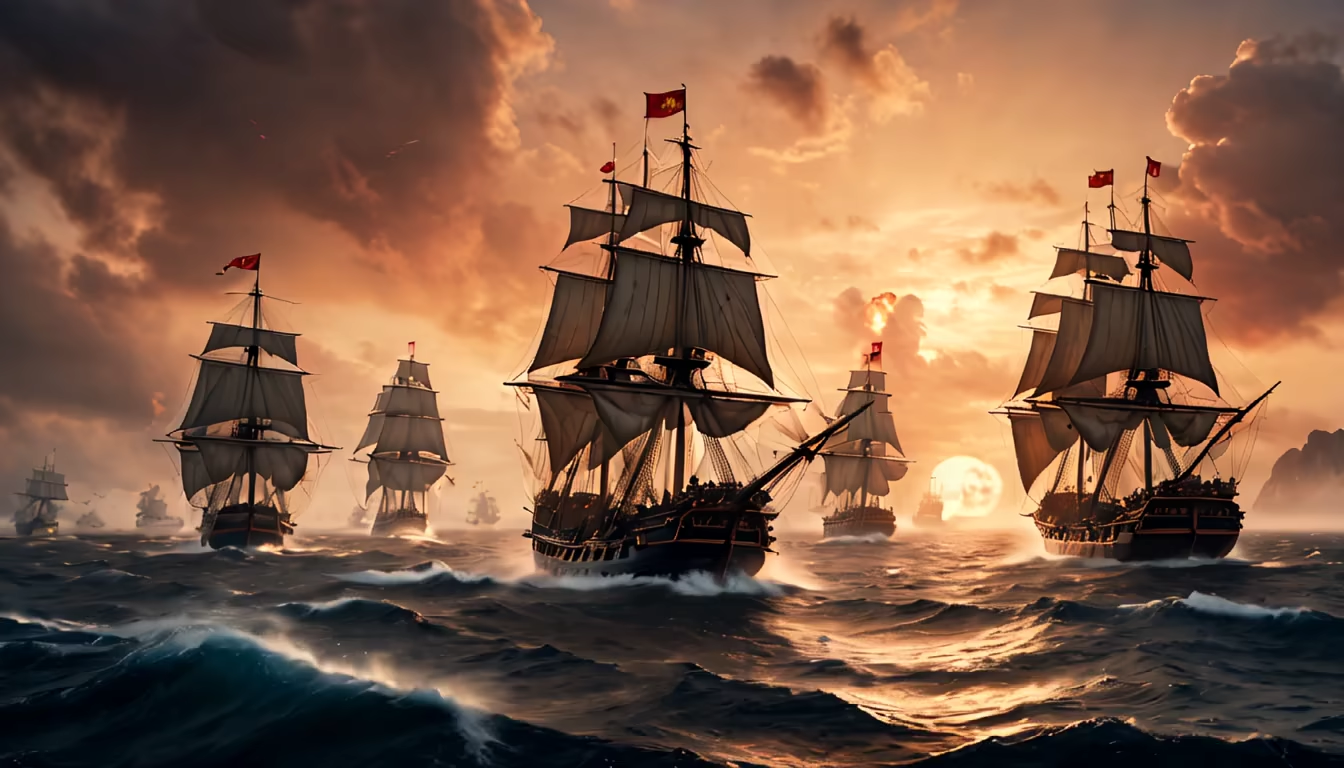
Prompt: How about an image showing a historical trade scenario between China and Britain? It could feature Chinese goods like tea, silk, and porcelain being loaded onto ships headed to Britain, while British goods or representatives struggle to gain entry into China, illustrating the one-sided nature of the trade relationship. This could be depicted through contrasting scenes or visuals to highlight the unequal exchange.
Style: Cinematic


Prompt: Depict the distinctive nature of the Second Opium War by highlighting the pivotal role of the French, setting the scene for a complex historical conflict in a captivating image prompt.\"
Style: Cinematic


Prompt: Explore the pivotal role of Commissioner Lin Zexu in combating the opium trade when dispatched by the Chinese Emperor to Guangdong Province, the heart of the opium trade. Delve into Lin Zexu's background, beliefs, and the strategies he employed to staunchly oppose the opium trade. Analyze the socio-political climate of Guangdong Province and the challenges faced by Lin Zexu in his efforts to eradicate opium. Investigate the confrontations and negotiations between Lin Zexu and British merchants, considering the clash of ideologies regarding trade, morality, and sovereignty. Examine the impact of Lin Zexu's actions on both the Chinese government's stance on the opium trade and the perception of Western powers. Assess the significance of Lin Zexu's mission and the legacy of his anti-opium efforts in shaping Chinese history, international relations, and the discourse on trade ethics.
Style: Photographic
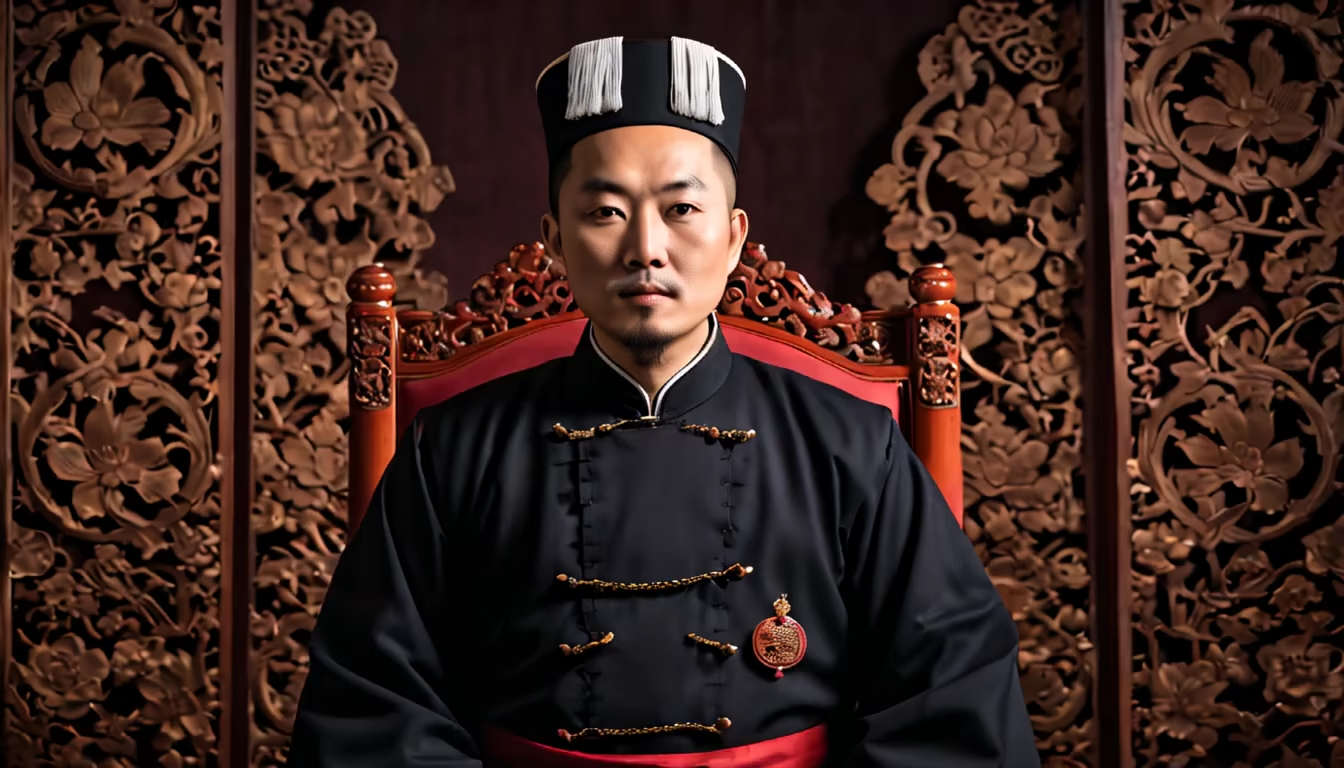

Prompt: Imagine an image split into two parts. On one side, portray the devastating effects of the opium epidemic in China: scenes of suffering individuals, hospitals overwhelmed, and communities in distress due to addiction and health issues caused by opium abuse. On the other side, depict a visual representation of China's trade deficit during the Opium War, showcasing the outflow of silver and wealth from China to Britain due to the opium trade. The image could juxtapose these elements, highlighting the dual impact of a public health crisis and economic turmoil during this historical period.
Style: Photographic
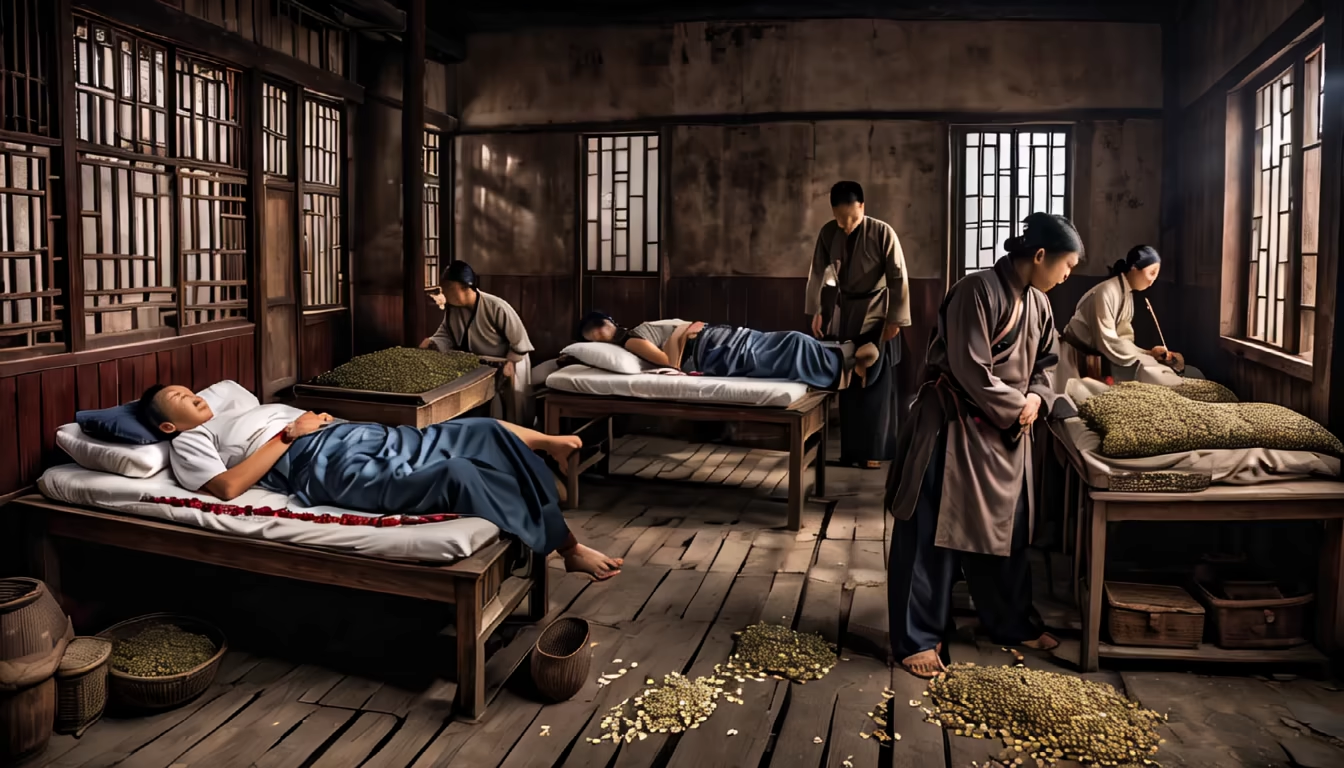
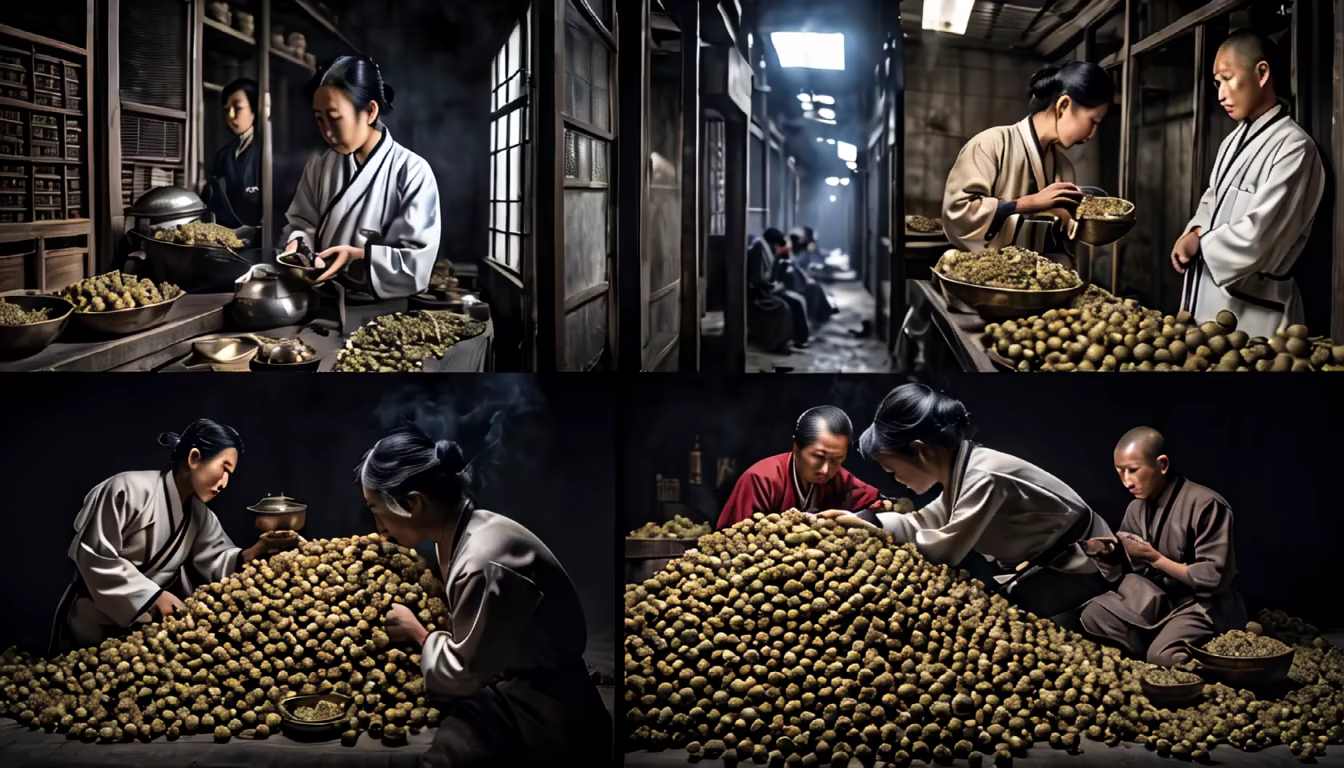
Prompt: Imagine an image split into two parts. On one side, portray the devastating effects of the opium epidemic in China: scenes of suffering individuals, hospitals overwhelmed, and communities in distress due to addiction and health issues caused by opium abuse. On the other side, depict a visual representation of China's trade deficit during the Opium War, showcasing the outflow of silver and wealth from China to Britain due to the opium trade. The image could juxtapose these elements, highlighting the dual impact of a public health crisis and economic turmoil during this historical period.
Style: Photographic
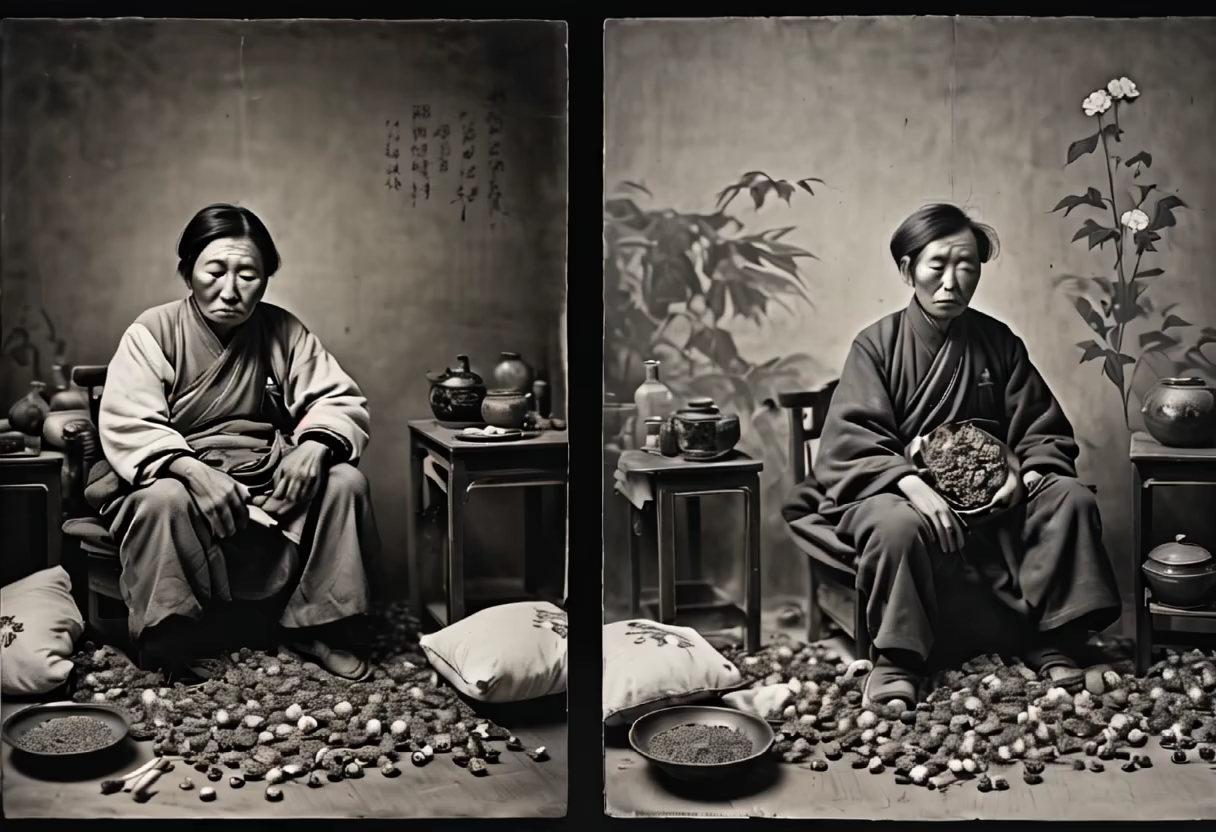
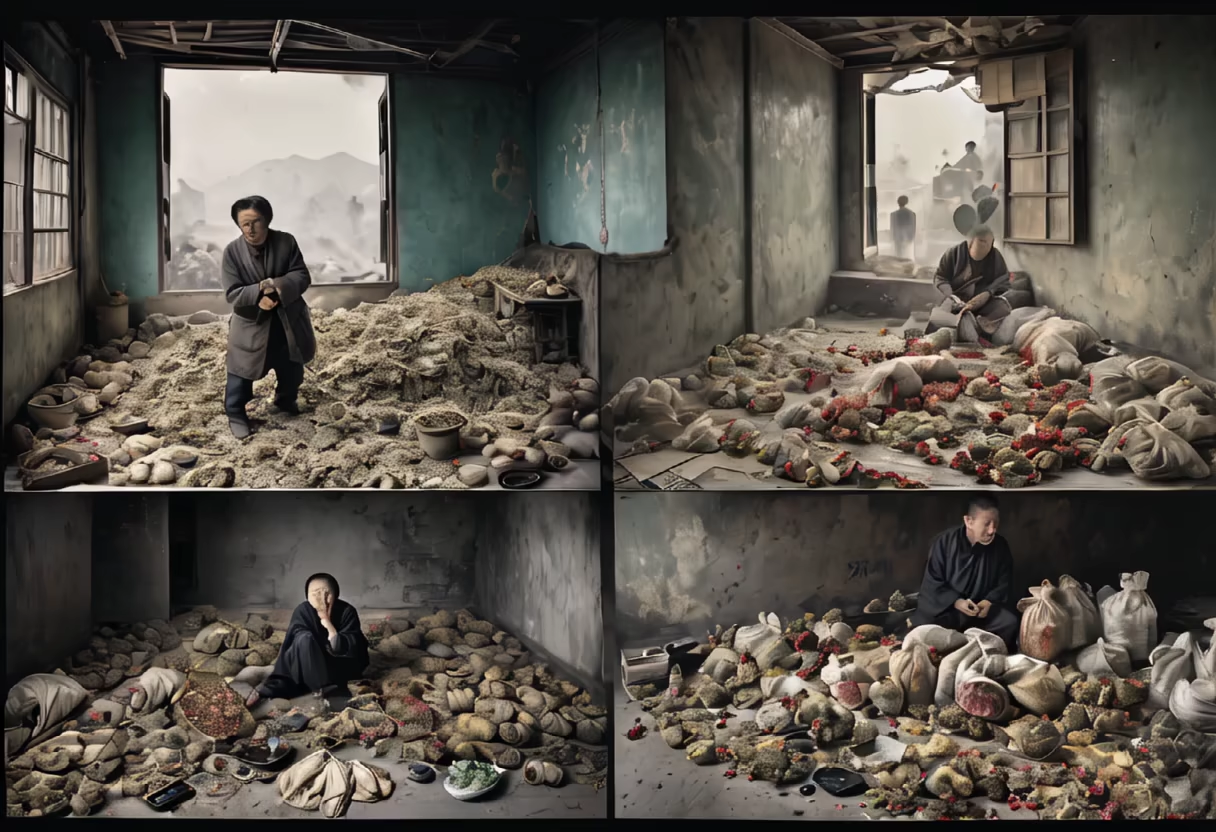
Prompt: Visualize an image split into two parts: on one side, depict British merchants or ships trading opium, surrounded by wealth and prosperity symbols like coins or opulent items. On the other side, portray the Chinese government or officials struggling to contain the opium trade, trying to stop the flow of the drug into their country, perhaps through the confiscation or destruction of opium crates.In the middle, create a visual representation of tension and conflict, symbolized by opposing forces or barriers between the two sides. This image aims to illustrate the fundamental cause of the conflict—the profitable opium trade for the British contrasted with the Chinese efforts to suppress it, emphasizing the stark differences in interests that led to the escalation of tensions and ultimately the conflict between the two nations.
Style: Photographic


Prompt: \"Convey the brutal reality of the Second Opium War in a striking image prompt, depicting the series of battles that marked the conflict, with both sides enduring heavy losses, capturing the intense and devastating nature of the war.\"
Style: Cinematic
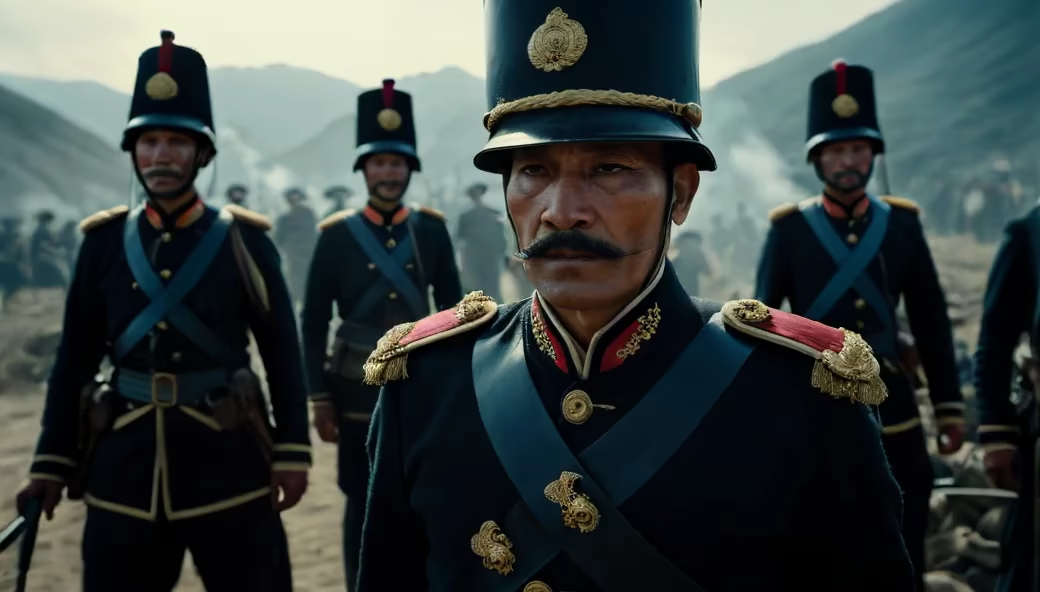
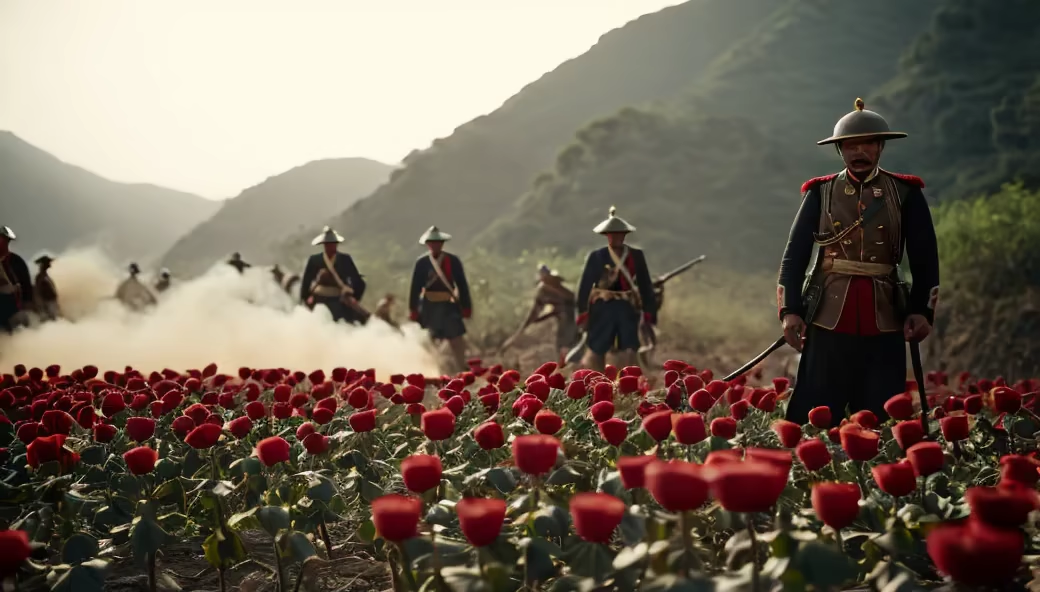
Prompt: Picture an image split into two scenes: one portraying the struggle of British merchants attempting to trade their goods in China, facing barriers and restrictions. The other side could depict a depiction of opium being traded by British merchants to Chinese traders, highlighting the solution Britain found to address their trade imbalance. You might show ships arriving with crates of opium contrasted with the difficulty British traders faced with their own goods. The visual contrast can emphasize the role of opium as a solution for Britain's trade predicament.
Style: Cinematic
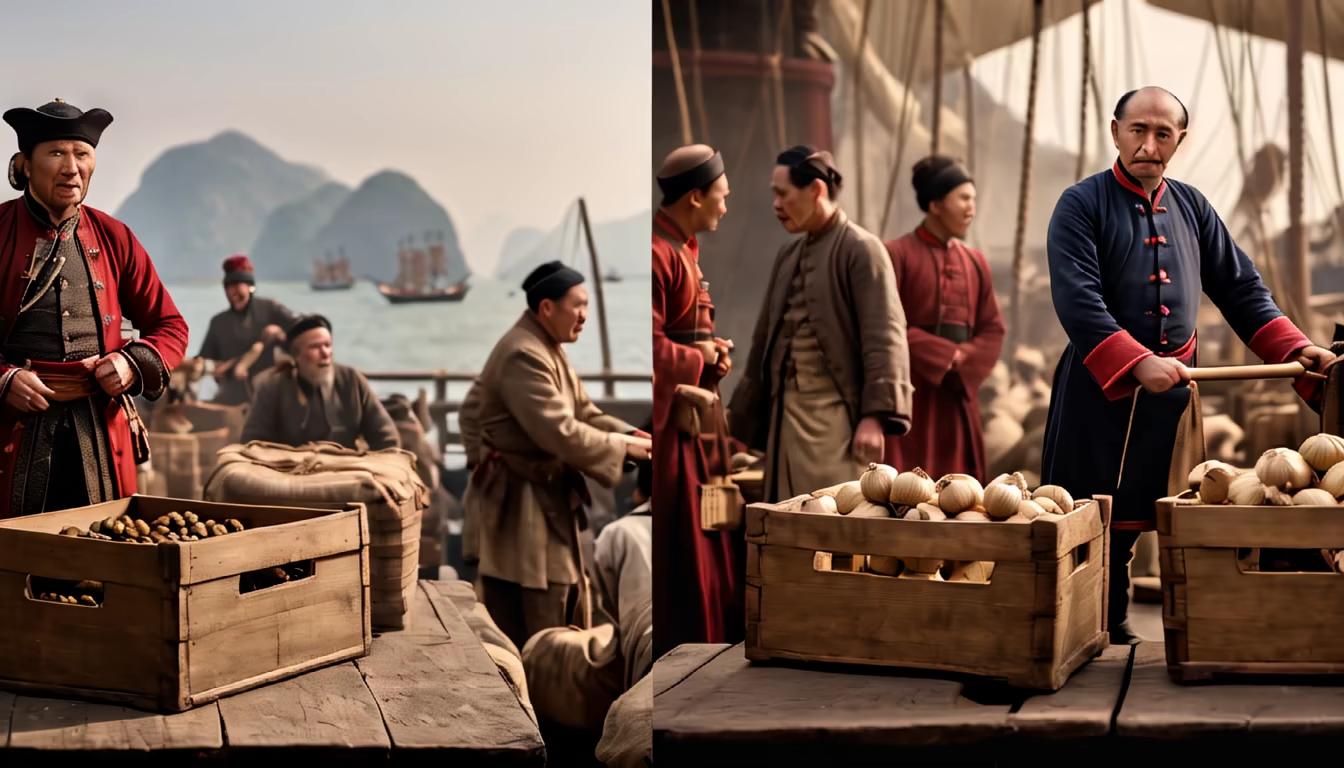

Prompt: First Opium War served as a harrowing reminder of the destructive capability of modern weaponry and the devastating repercussions of misguided trade policies
Style: Photographic


Prompt: showcasing the Chinese government's efforts to ban the opium trade, with officials destroying opium stocks and implementing anti-opium measures. This could be depicted through scenes of crackdowns on opium dens or the destruction of confiscated opium.
Style: Photographic


Prompt: Visualize an image split into two contrasting scenes: on one side, portray the Chinese government's crackdown on the opium trade, with officials and workers destroying crates of opium, while on the other side, depict a stern and displeased British envoy or representatives reacting to this interference. Show their dissatisfaction or anger through body language or facial expressions, symbolizing Britain's resistance to China's attempts to disrupt their profitable opium trade. This contrast aims to emphasize Britain's displeasure and resistance towards the Chinese interference in their lucrative trade.
Style: Photographic
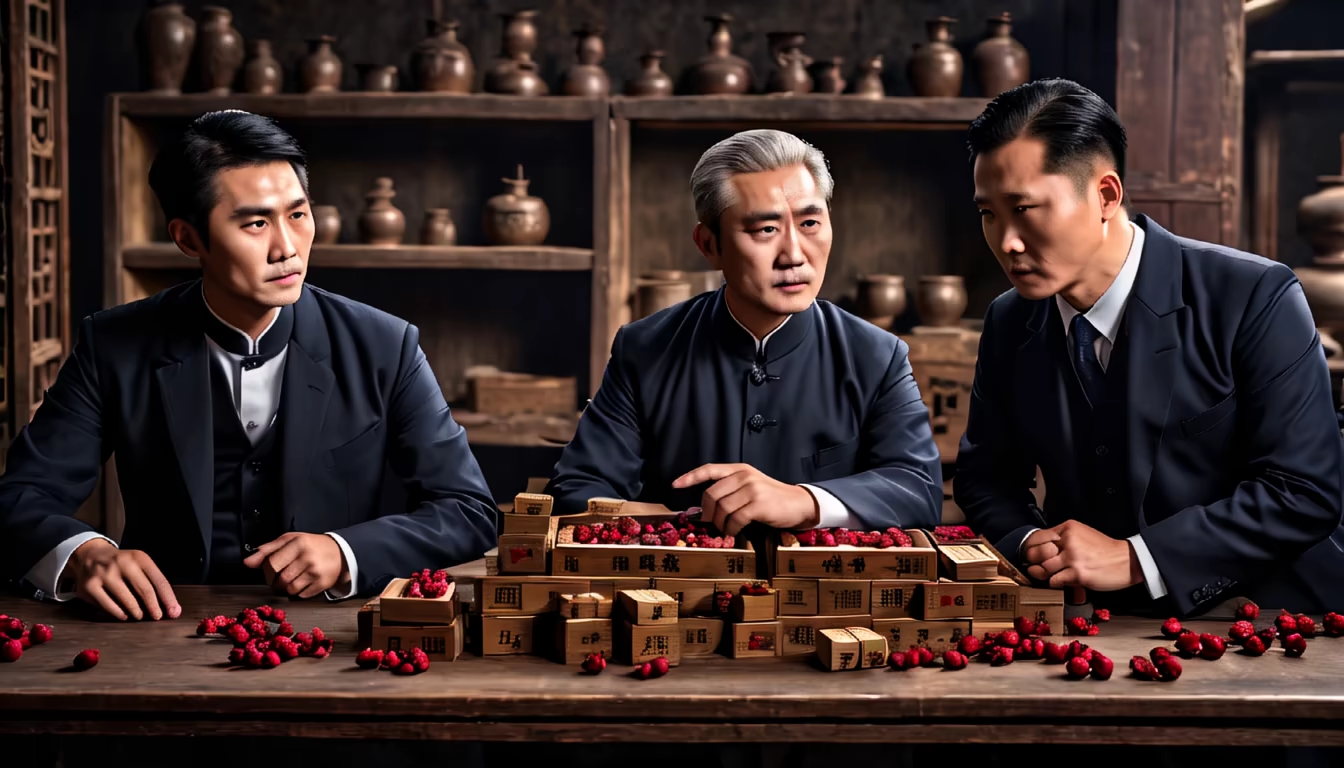
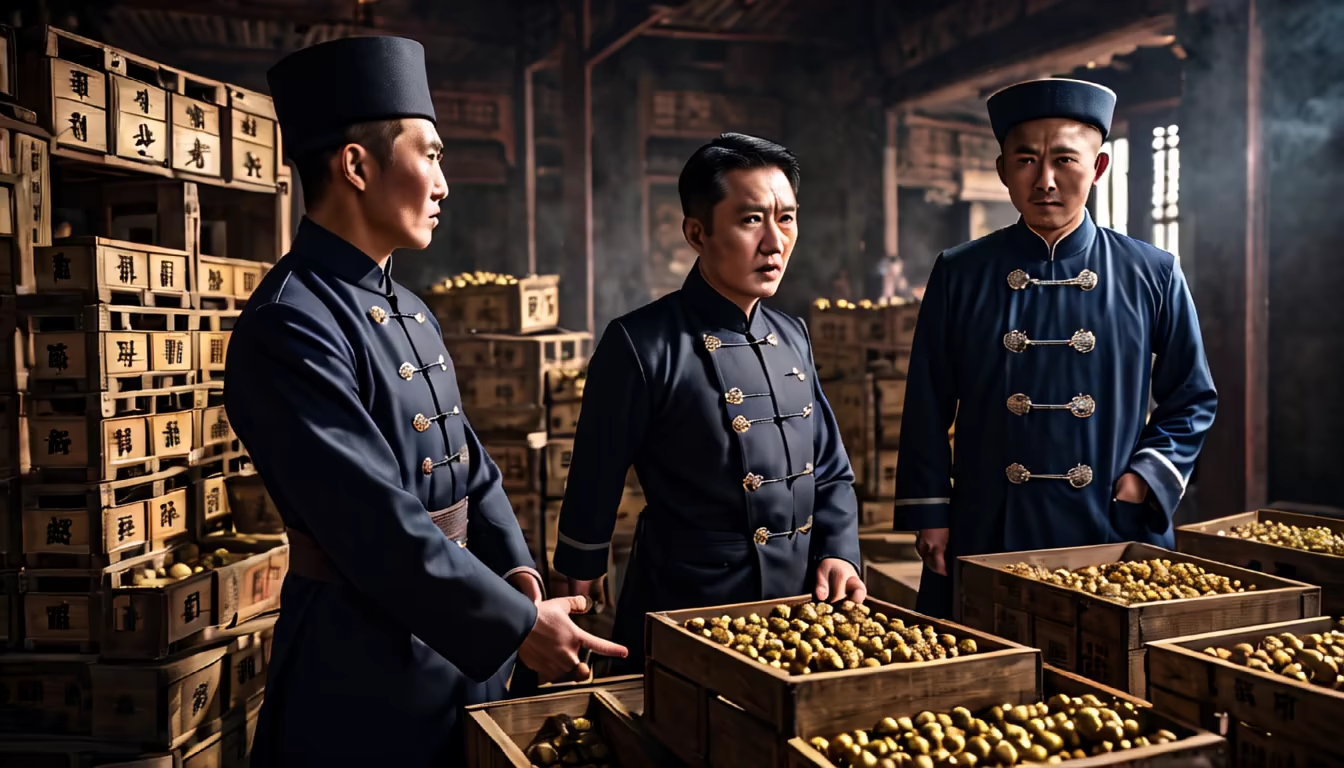
Prompt: Imagine an image split into two halves: one side showcasing the Chinese government's efforts to ban the opium trade, with officials destroying opium stocks and implementing anti-opium measures. This could be depicted through scenes of crackdowns on opium dens or the destruction of confiscated opium. On the other side, illustrate the intended outcome, with visuals representing a more stable and balanced society, healthier individuals, and a symbolic portrayal of restored trade equilibrium. The image would aim to highlight the proactive steps taken by the Chinese government to safeguard their population and restore order amid the opium crisis.
Style: Photographic

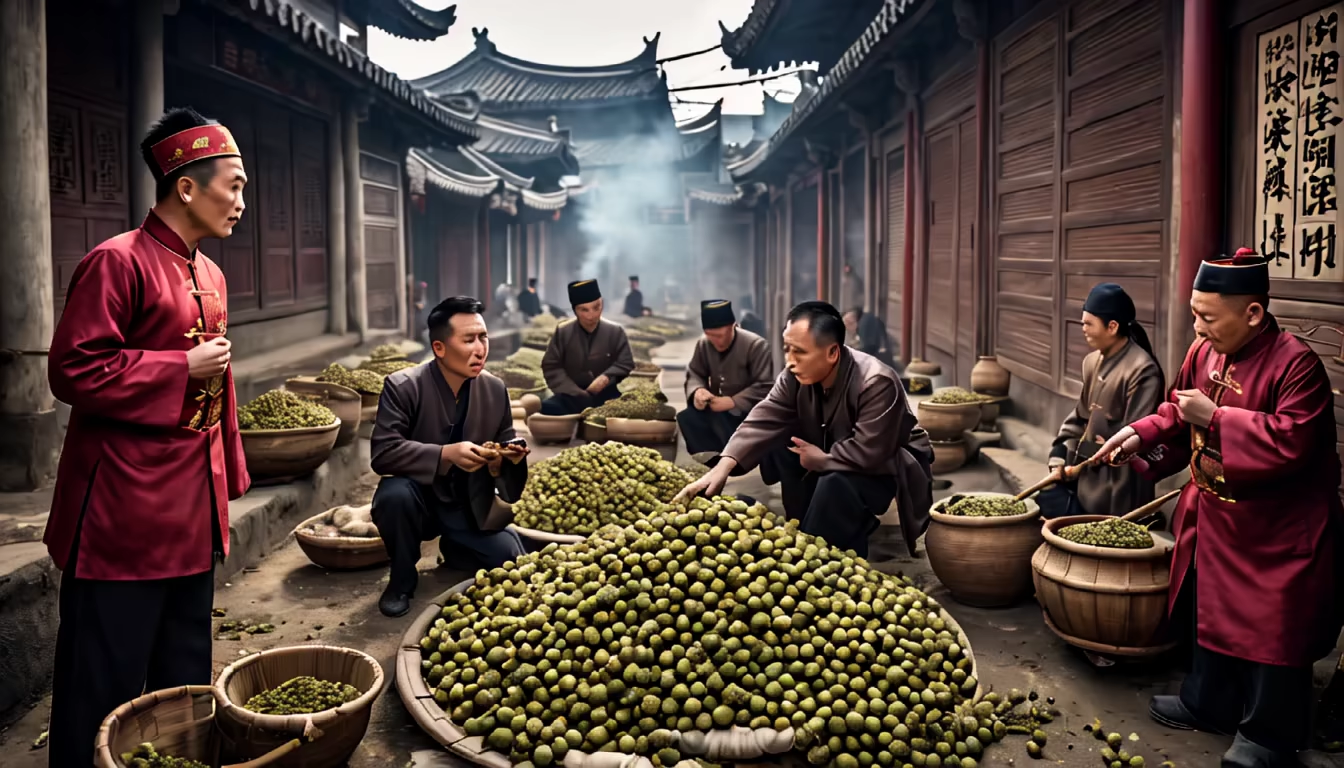
Prompt: TREATY OF NANKING marked the end of the First Opium War and set the stage for significant changes in the Sino-British relationship
Style: Cinematic
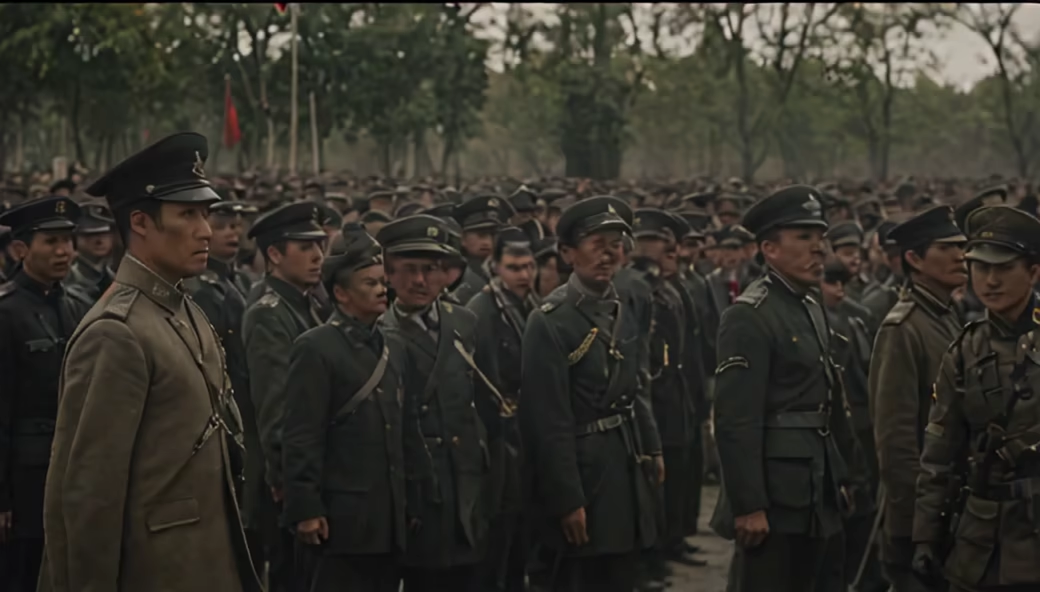
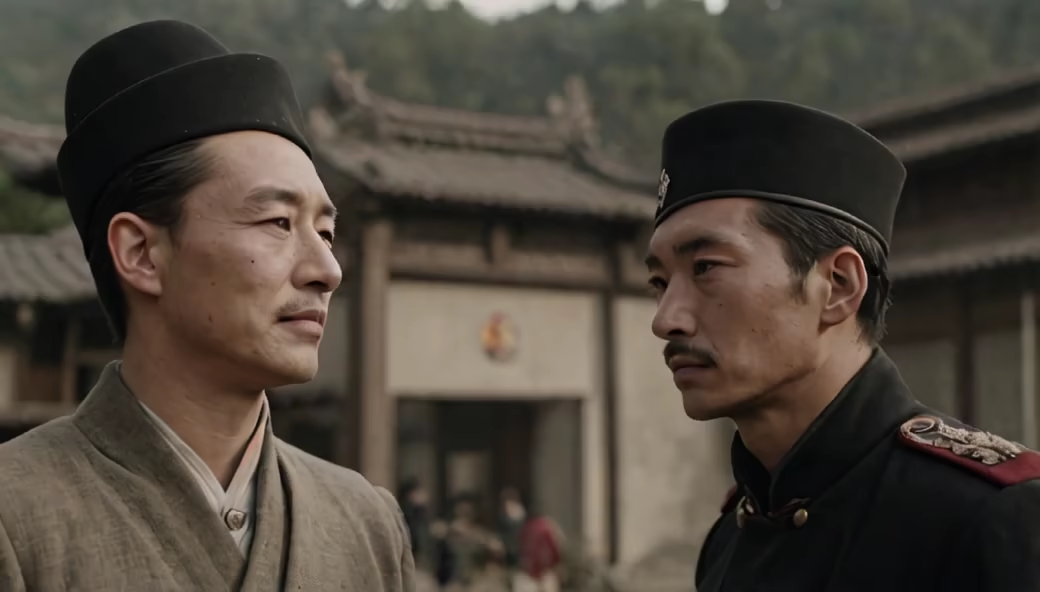
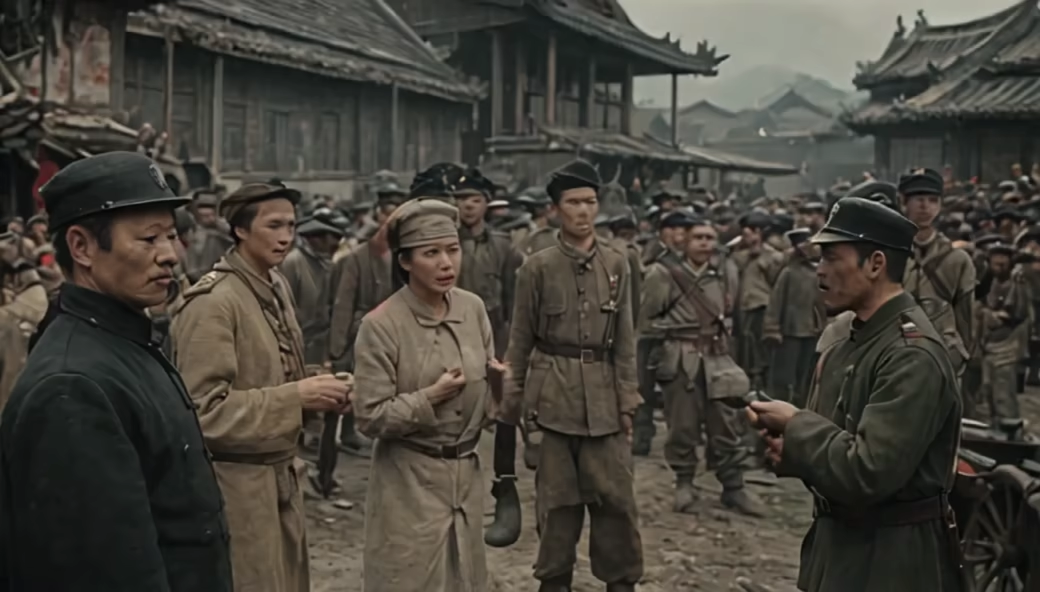
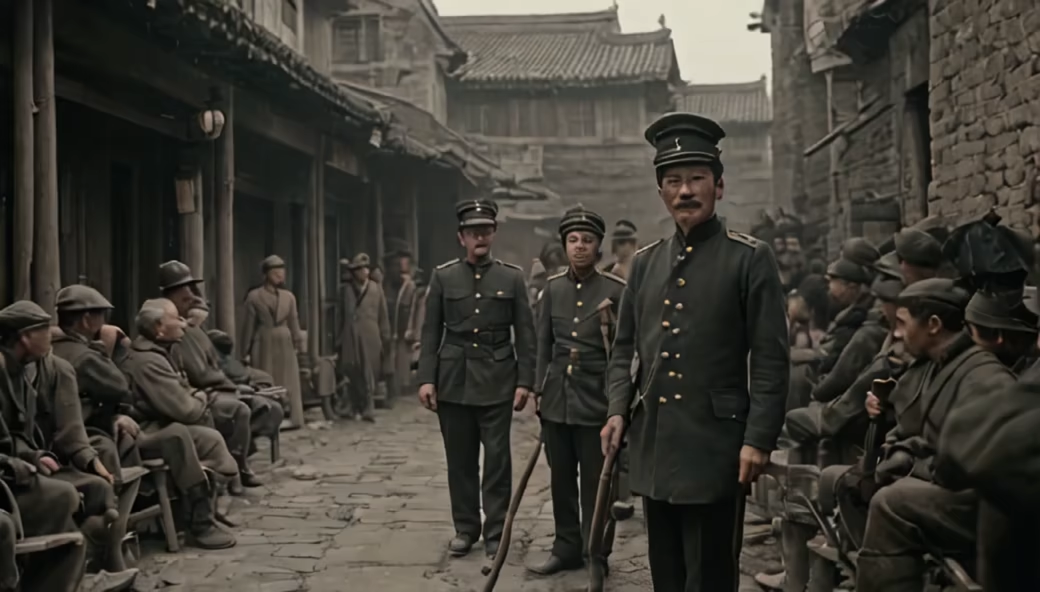
Prompt: The conflict originated from the contentious opium trade, which had provided the British with considerable profits while the Chinese yearned to suppress it.
Style: Photographic


Prompt: The conflict originated from the contentious opium trade, which had provided the British with considerable profits while the Chinese yearned to suppress it.
Style: Photographic


Prompt: An evocative visual portrays a dramatic maritime scene from the historical period of the Opium Wars. The image encapsulates the intensity of naval warfare during this time, showcasing a fierce confrontation between British and Chinese naval forces on the open sea. The foreground exhibits the tumultuous waters, roiled by the clash of warships, their sails taut against the wind. British war vessels, sleek and sturdy, engage in a strategic formation, cannons protruding from their sides, billowing smoke and fire as they exchange volleys with Chinese junks, adorned with colorful sails and intricate designs. The horizon is dominated by the vast expanse of the sea, with the sky painted in hues of orange and red from the setting sun, casting a fiery glow on the tumultuous scene. In the distance, the silhouettes of more ships approach, indicating the ongoing nature of the conflict and the continuous struggle for naval dominance. This image encapsulates the pivotal battles fought at sea during the Opium Wars, showcasing the high-stakes confrontations, technological disparities, and the crucial role of naval power in shaping the outcome of the conflicts between the British and Chinese forces.
Style: Photographic

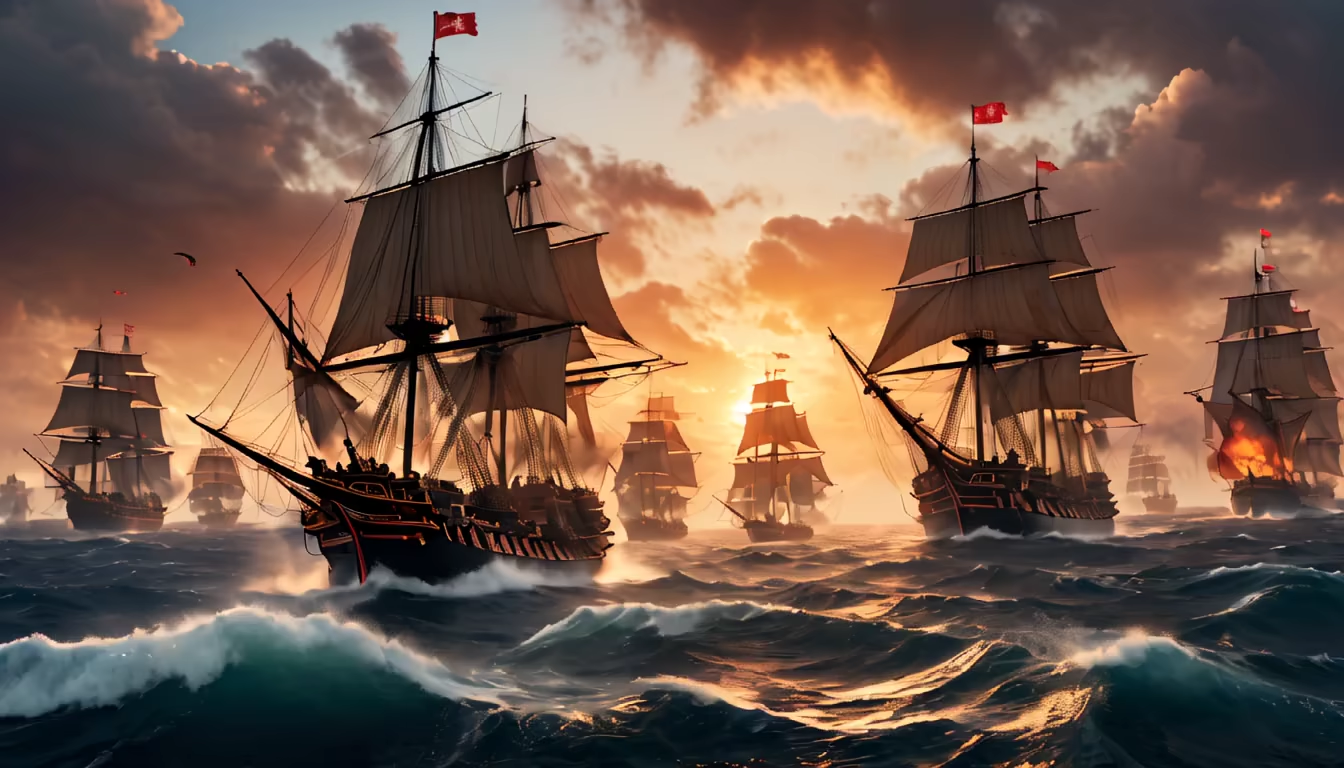
Prompt: Chinese palaces,Majestic: Palaces often exude a solemn and majestic atmosphere, showcasing royal dignity. Spectacular: The scale and design of palace architecture are breathtaking, providing a spectacular feeling. Ancient: Many palaces boast a long history, inheriting rich cultural heritage, presenting an ancient and magnificent charm. Magnificent: The architectural structure, scale, and decorations of palaces display a magnificent aura, conveying a sense of solemnity and grandeur. Exquisite: Both the interior and exterior decorations of palaces are often meticulously designed and crafted, full of delicacy and intricacy. Elegant: The architecture and courtyard layout of palaces often exhibit a noble and elegant quality, showcasing cultural refinement. Mysterious: Due to the often lengthy history and legends associated with palaces, they are often considered mysterious places. Colorful: The paintings and decorations of palaces frequently utilize vibrant and rich colors, providing the building with a lively visual effect. Unique: Each palace has its unique design and architectural features, reflecting different cultural styles from various historical periods and regions. Astonishing: The overall atmosphere and details of palaces often leave people astonished, representing the pinnacle of human architectural art.
Style: Cinematic
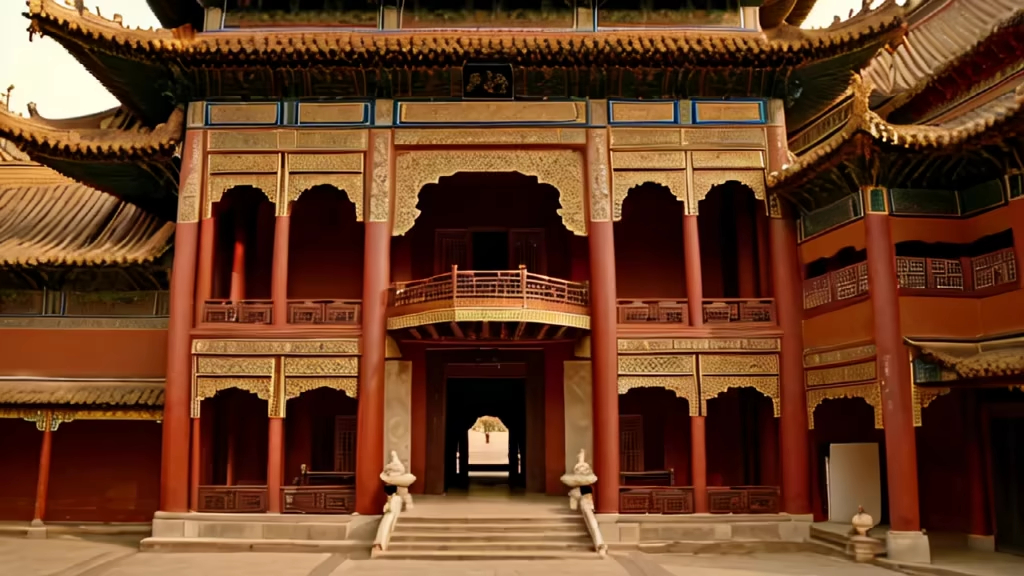
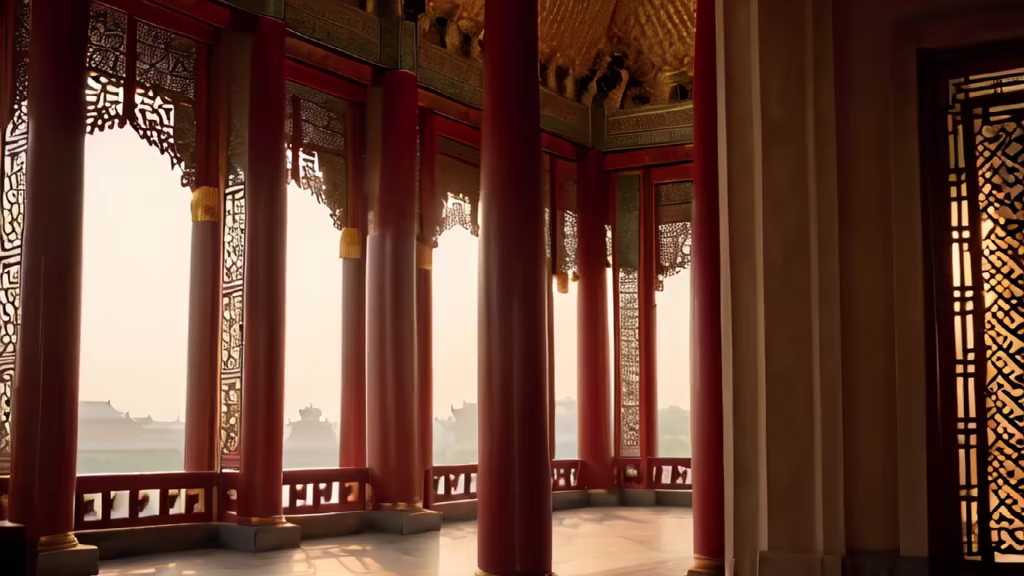
Prompt: Chinese palaces,Majestic: Palaces often exude a solemn and majestic atmosphere, showcasing royal dignity. Spectacular: The scale and design of palace architecture are breathtaking, providing a spectacular feeling. Ancient: Many palaces boast a long history, inheriting rich cultural heritage, presenting an ancient and magnificent charm. Magnificent: The architectural structure, scale, and decorations of palaces display a magnificent aura, conveying a sense of solemnity and grandeur. Exquisite: Both the interior and exterior decorations of palaces are often meticulously designed and crafted, full of delicacy and intricacy. Elegant: The architecture and courtyard layout of palaces often exhibit a noble and elegant quality, showcasing cultural refinement. Mysterious: Due to the often lengthy history and legends associated with palaces, they are often considered mysterious places. Colorful: The paintings and decorations of palaces frequently utilize vibrant and rich colors, providing the building with a lively visual effect. Unique: Each palace has its unique design and architectural features, reflecting different cultural styles from various historical periods and regions. Astonishing: The overall atmosphere and details of palaces often leave people astonished, representing the pinnacle of human architectural art. from a perspective above
Style: Cinematic
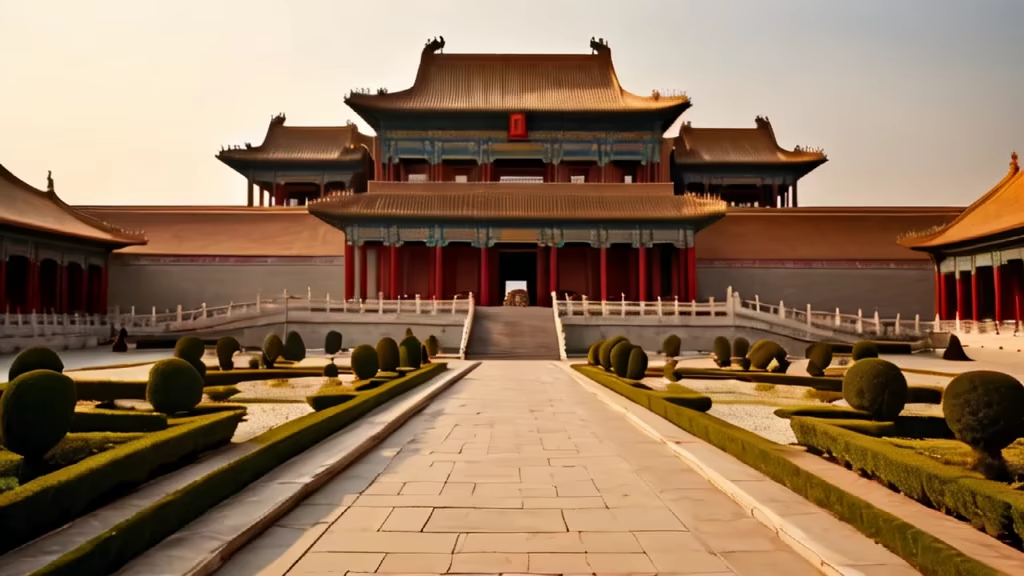
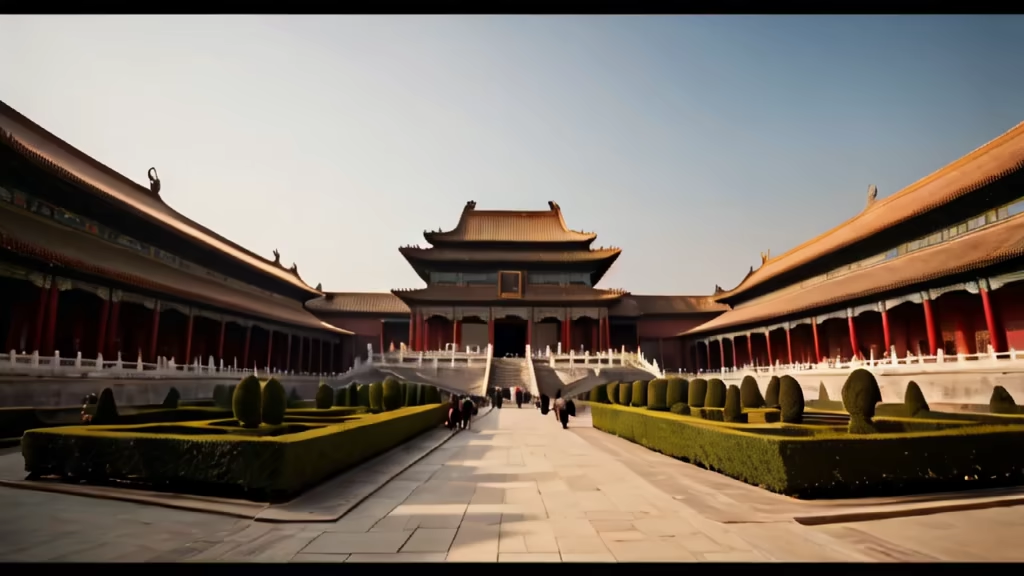
Prompt: Generate an evocative visual representation depicting the enforced opening of the five treaty ports - Canton, Amoy, Foochow-fu, Ningpo, and Shanghai - showcasing the significant shift from the prior imperial control over foreign commerce to the initiation of British trade and habitation within these ports as mandated by the treaty.
Style: Cinematic

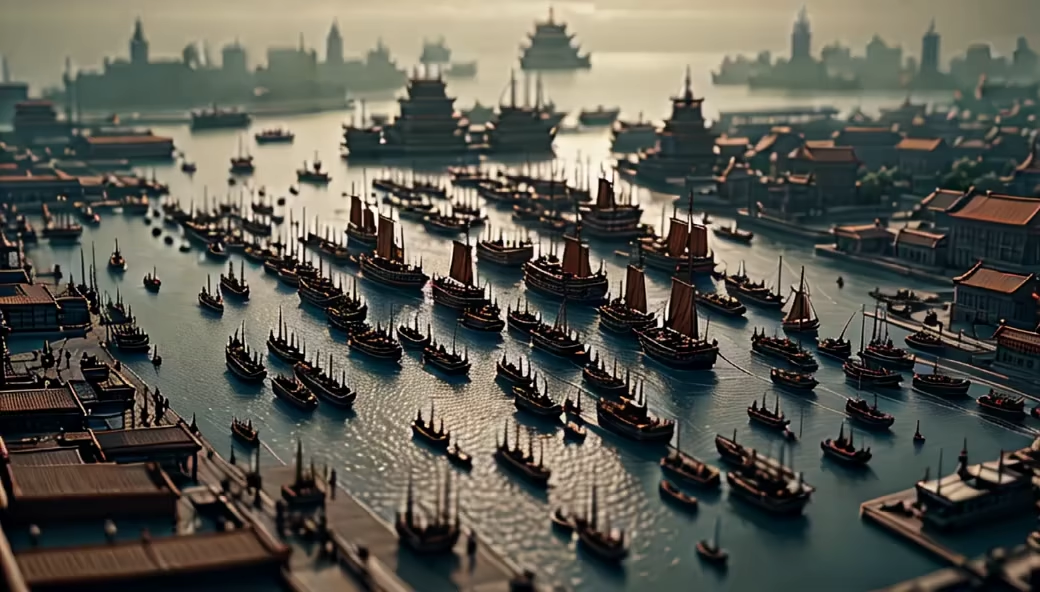
Prompt: \"Generate an immersive portrayal illustrating the shift caused by the treaty's requirement to open five treaty ports—Canton, Amoy, Foochow-fu, Ningpo, and Shanghai—showcasing the dissolution of China's former imperial control over foreign commerce and the ensuing influx of British trade and residency within these ports.\"
Style: Cinematic
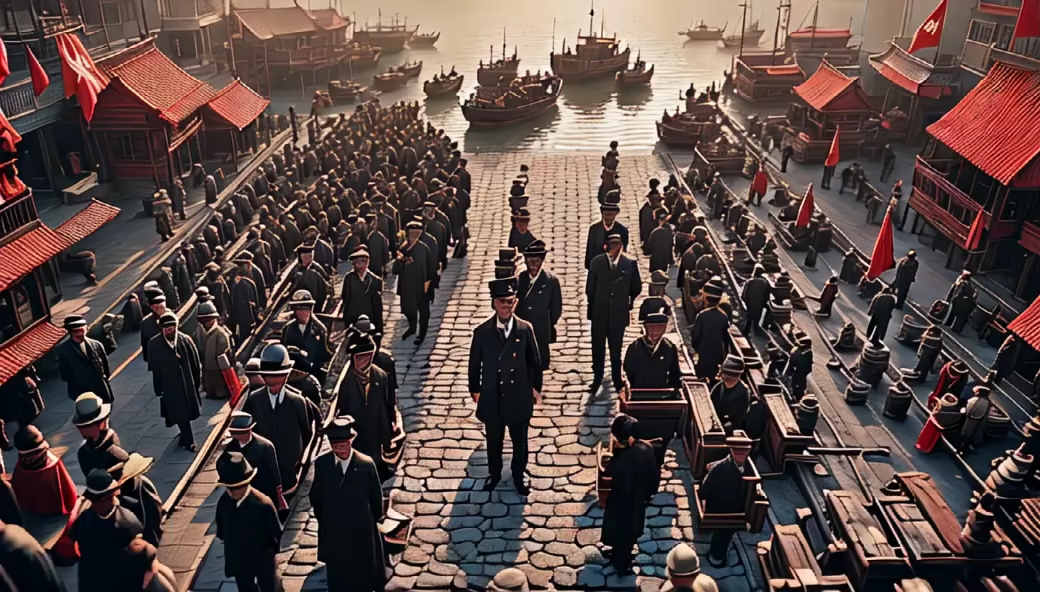
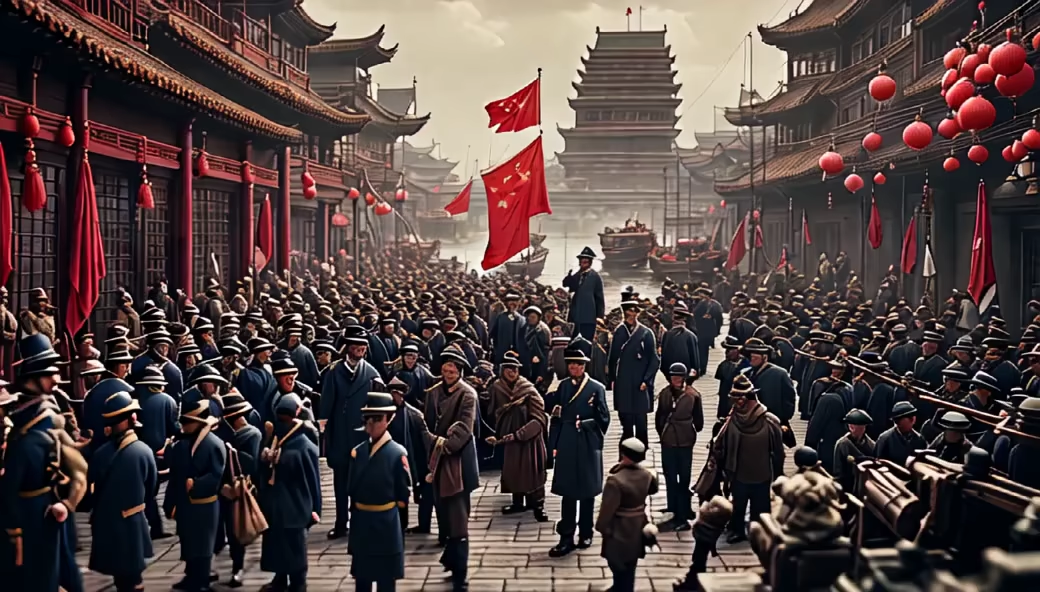
Prompt: \"After the destruction of their opium, the British, fueled by indignation, pressed for compensation and adamantly asserted the necessity of upholding the trade, marking a pivotal moment in the diplomatic tension between the nations.\"
Style: Photographic

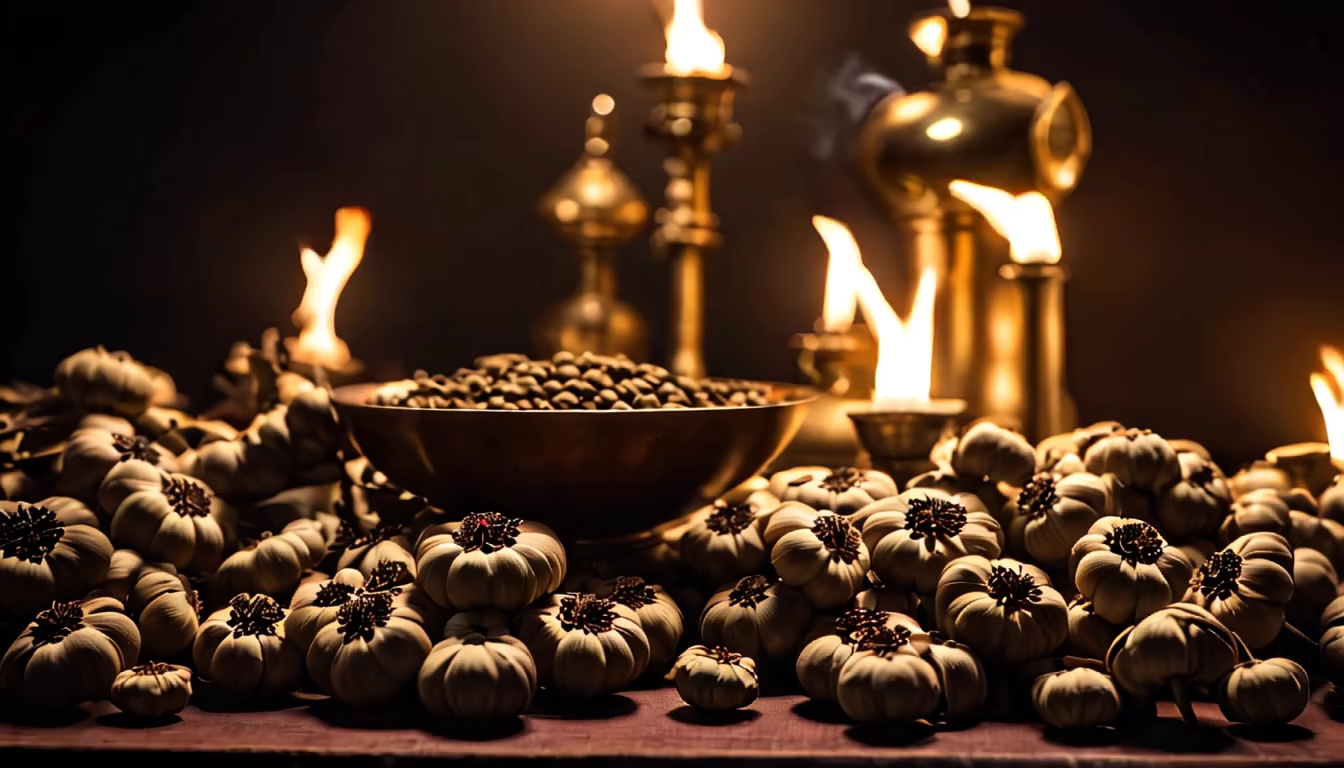
Prompt: \"After the destruction of their opium, the British, fueled by indignation, pressed for compensation and adamantly asserted the necessity of upholding the trade, marking a pivotal moment in the diplomatic tension between the nations.\"
Style: Photographic


Prompt: \"Generate an evocative visual representation depicting the enforced opening of the five treaty ports - Canton, Amoy, Foochow-fu, Ningpo, and Shanghai - showcasing the significant shift from the prior imperial control over foreign commerce to the initiation of British trade and habitation within these ports as mandated by the treaty.\"
Style: Cinematic
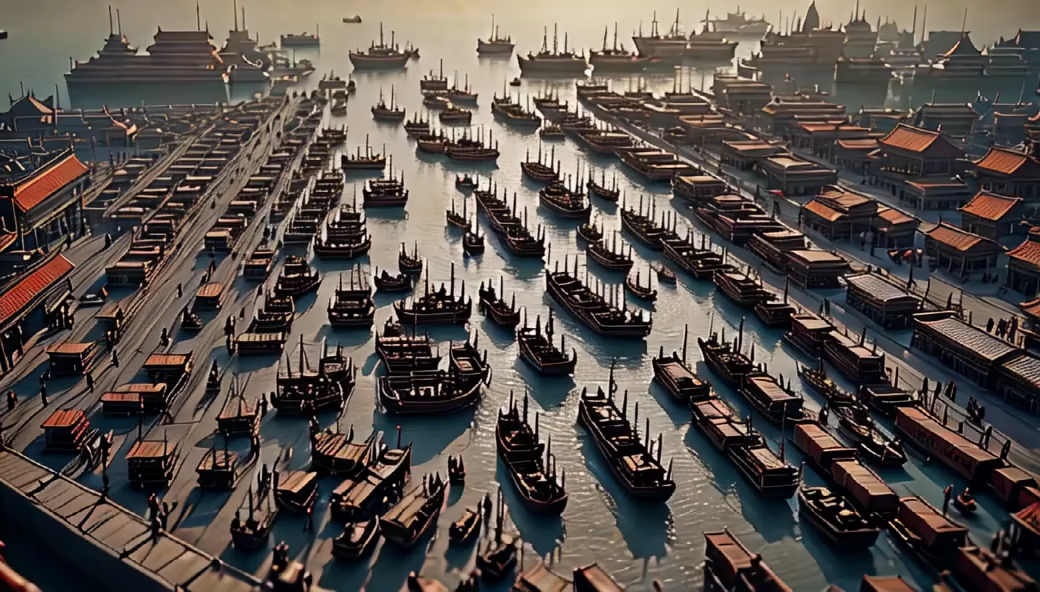

Prompt: a dark lady sith, star wars, long wavy red hair, green eyes, black robes, a red lightsaber in hands, sitting in the sands, watching the sunset, sands everywhere, sandstorm
Style: Digital Art


Prompt: \"In 1856, British officials accused ancient Chinese individuals of involvement in smuggling activities, but Chinese authorities vehemently denied any wrongdoing, challenging the allegations.
Negative: no modern things.stick to the year
Style: Cinematic
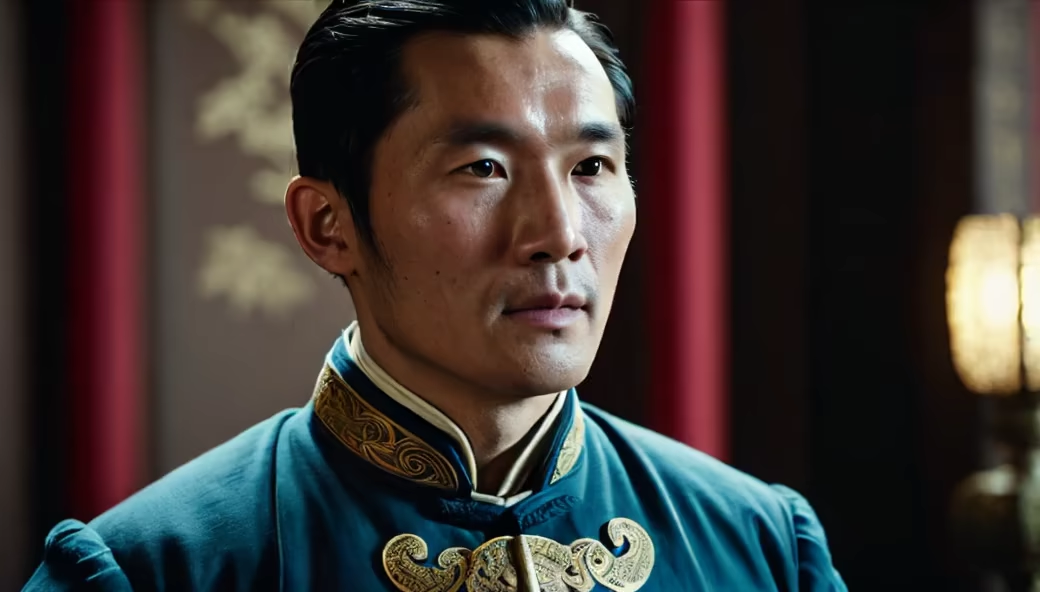

Prompt: Visualize a clandestine scene in 1856 featuring ancient smuggled goods, as British officials raise accusations against individuals in China, sparking a historical dispute.\"
Style: Cinematic
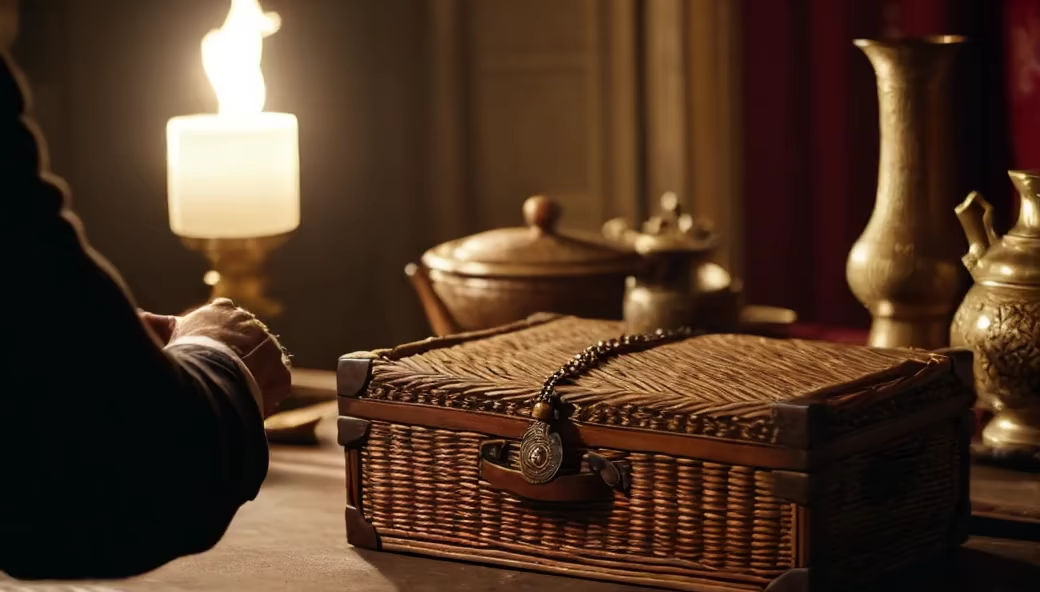


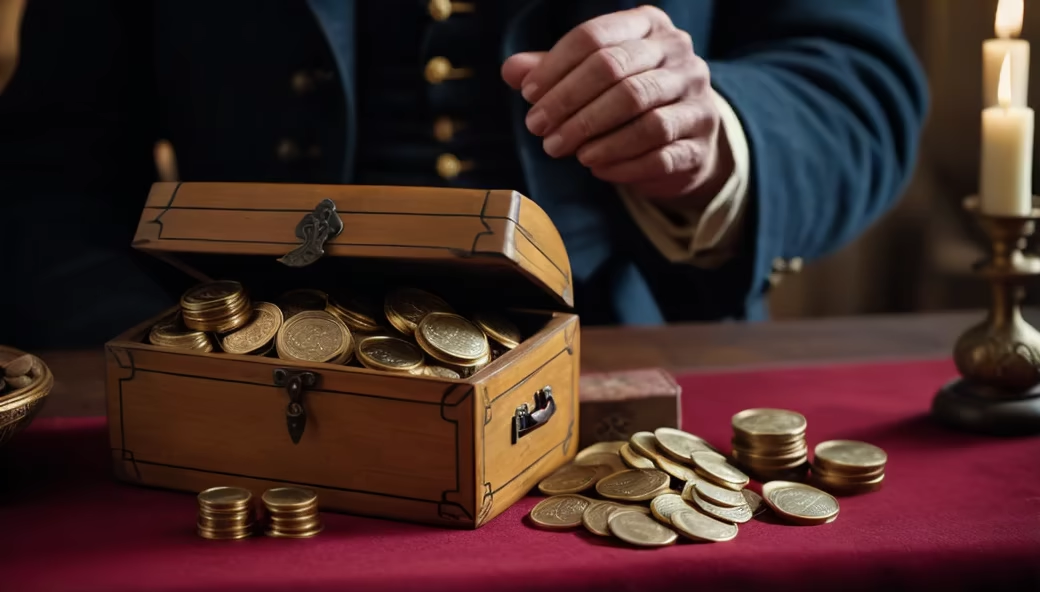
Prompt: a dark lady sith, star wars, long wavy red hair, green eyes, black robes, a red lightsaber in hands, sitting in the sands, sands everywhere, sandstorm, pyramids
Style: Digital Art




Prompt: \"Generate an evocative visual representation portraying the consequences of the opened ports - Canton, Amoy, Foochow-fu, Ningpo, and Shanghai - showcasing the influx of foreign goods, cultural influence, and the profound exposure of China to global interactions, symbolizing the nation's introduction to the broader world stage.\"
Style: Cinematic

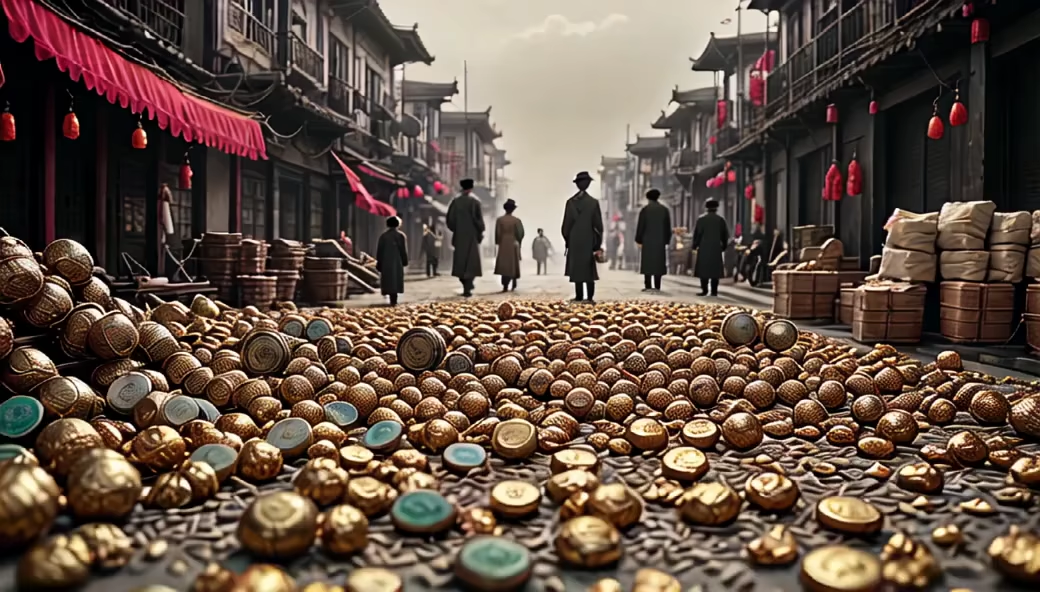
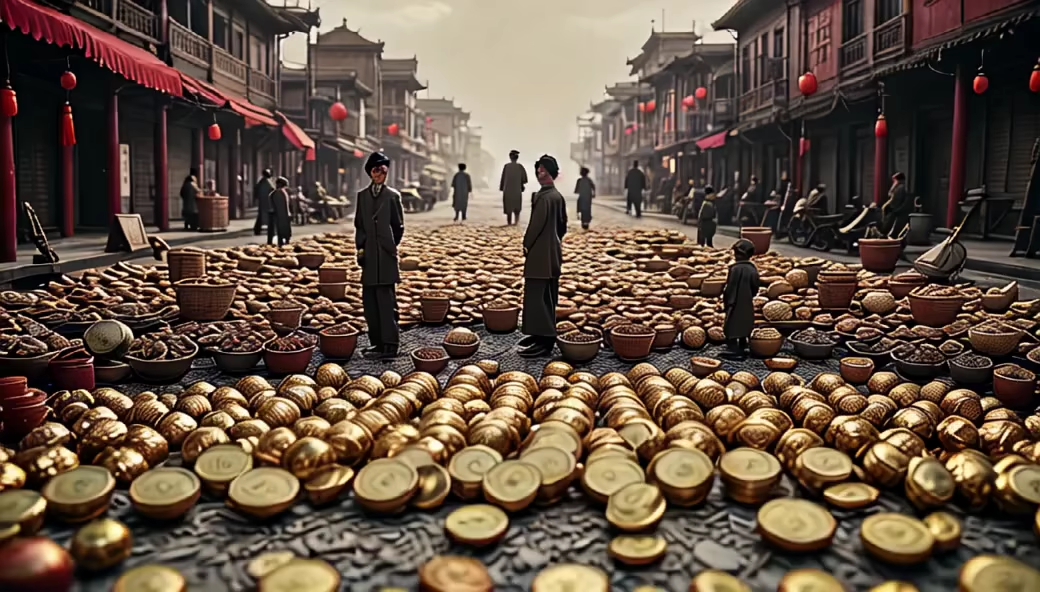

Prompt: A vivid, bustling scene depicting the vibrant landscape of Guangdong Province in the 19th century. The image captures the essence of the province, showcasing a bustling harbor teeming with numerous ships from various nations, their sails billowing in the breeze. On the docks, a fusion of cultures is evident as merchants from China and Western countries engage in animated discussions and trade activities. Amidst the commotion, opium chests are being unloaded from a British ship, flanked by Chinese officials and traders engaged in heated discussions. In the background, traditional Chinese architecture dots the landscape, juxtaposed against the imposing presence of Western-style buildings, symbolizing the clash of cultures and interests. Smoke wafts from opium dens nestled along narrow alleys, hinting at the pervasive influence of the opium trade within the province. The atmosphere is a blend of dynamism and tension, portraying the complex interactions, conflicts, and power struggles that characterized Guangdong Province as the epicenter of the opium trade during this era.
Style: Cinematic
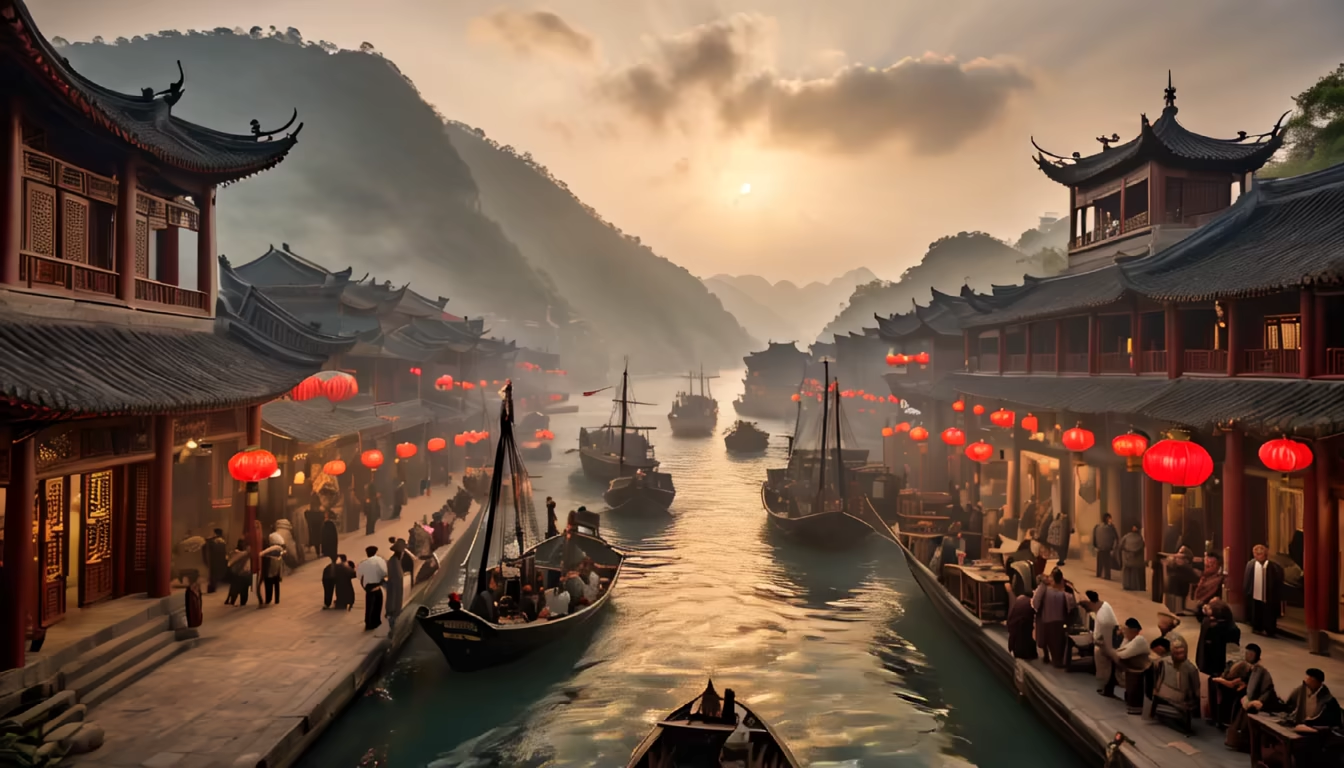
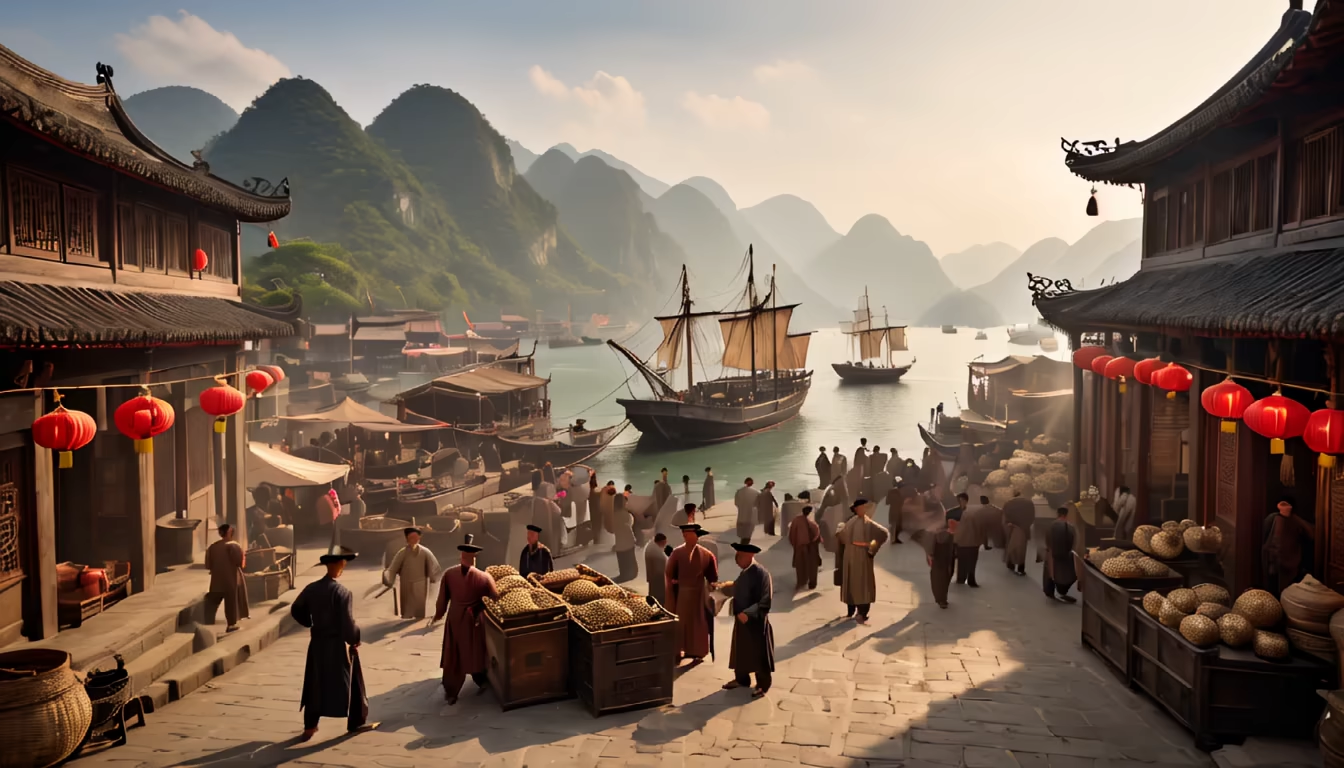
Prompt: How about an image showing a historical trade scenario between China and Britain? It could feature Chinese goods like tea, silk, and porcelain being loaded onto ships headed to Britain, while British goods or representatives struggle to gain entry into China, illustrating the one-sided nature of the trade relationship. This could be depicted through contrasting scenes or visuals to highlight the unequal exchange.
Style: Photographic


Prompt: Illustrate the five treaty ports—Canton, Amoy, Foochow-fu, Ningpo, and Shanghai—being opened for British trade and residence, capturing the influx of foreign goods and cultural exchange.
Style: Cinematic
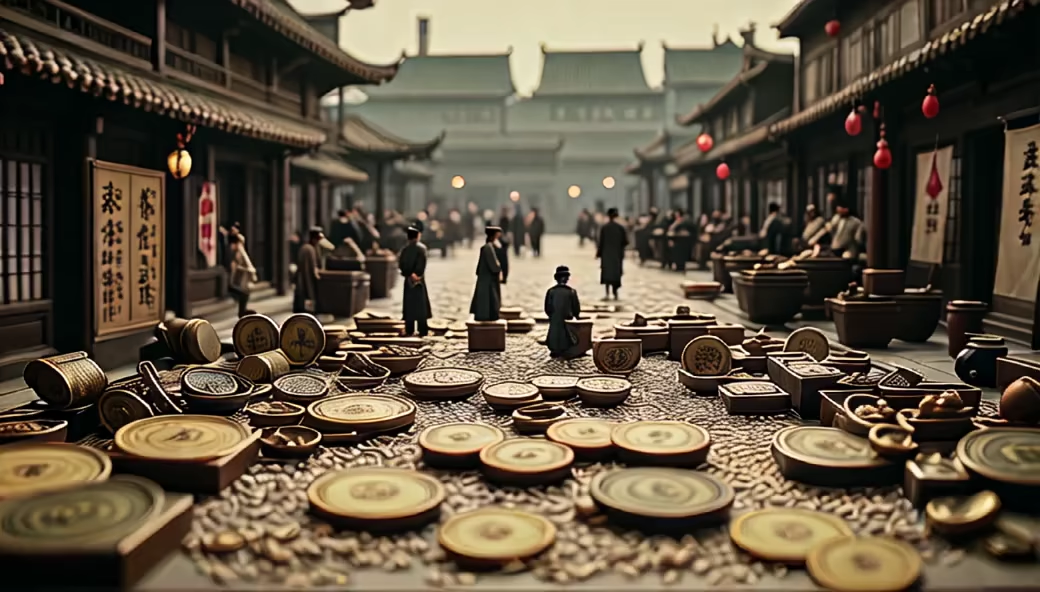
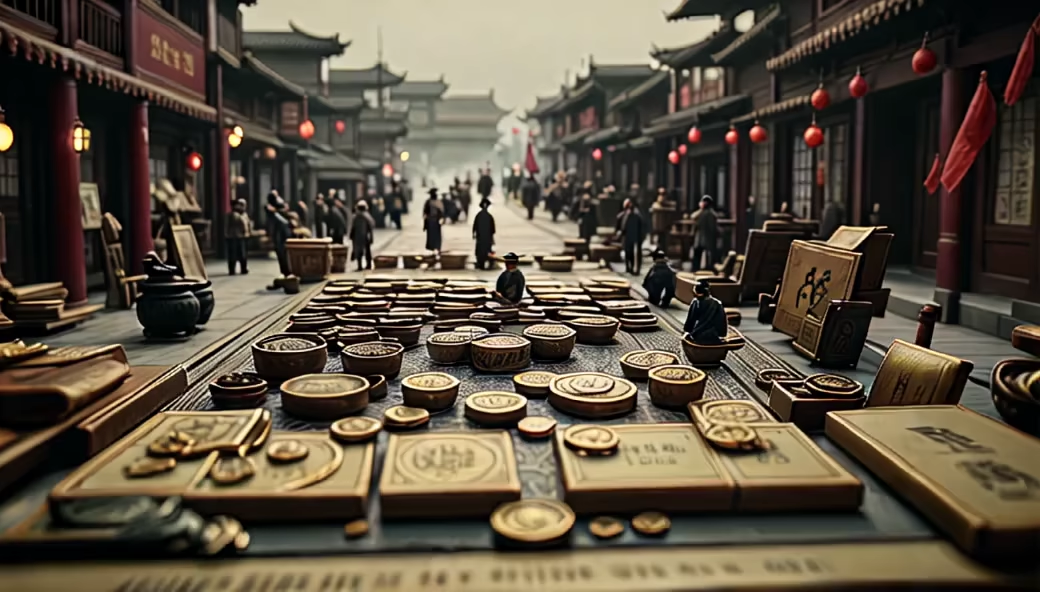
Prompt: Imagine a scene depicting British ships surrounding the island of Hong Kong, showcasing their dominance over the strategic location. You could include British flags, ships at sea, and the silhouette of Hong Kong Island in the background to portray the historical moment of British control over the territory.This happened during the Opium War.
Style: Cinematic
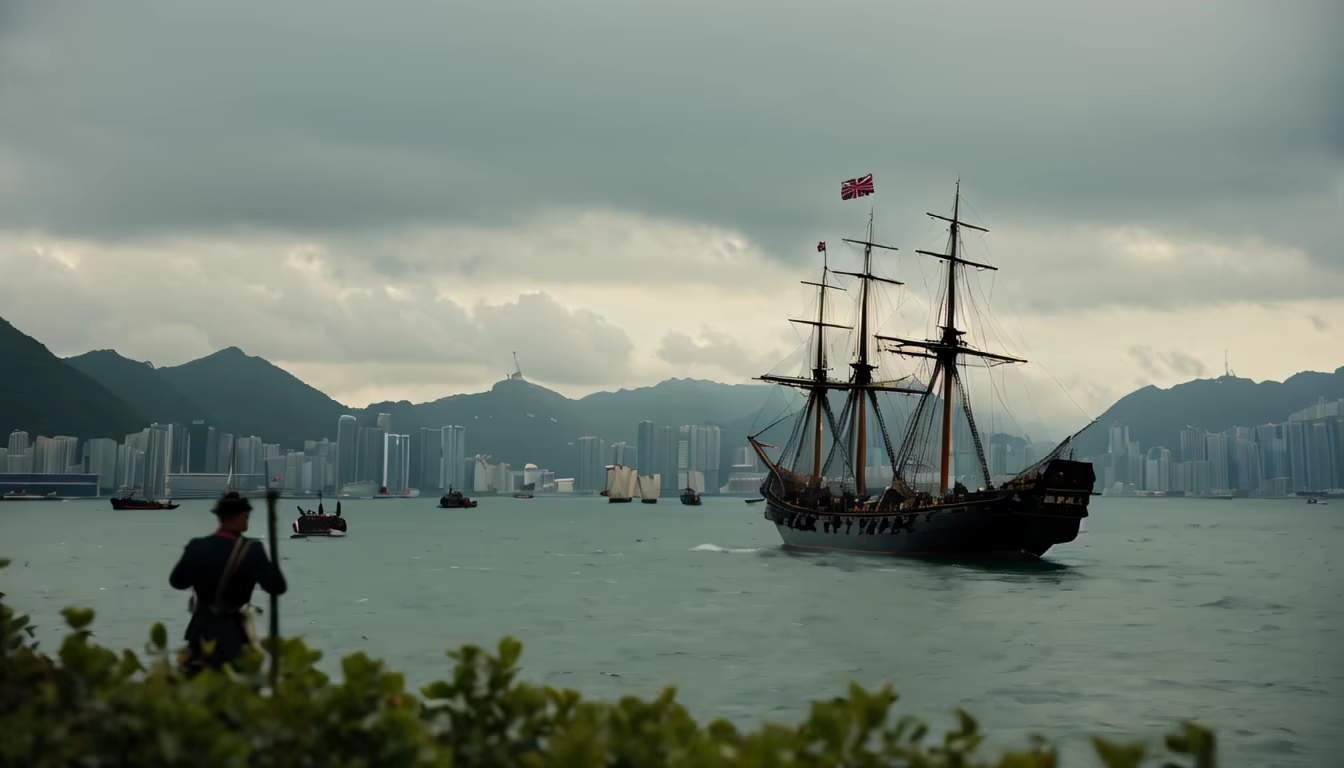

Prompt: The setting is a battlefield during the Opium War. On one side, British troops are seen advancing with cannons and rifles, their artillery pounding the defensive structures of the Chinese. Smoke billows from the Chinese defenses, showing signs of collapsing under the relentless assault. Amidst the chaos, the devastation caused by modern weaponry is evident. In the background, trade ships symbolize the economic motives behind the conflict, highlighting the repercussions of misguided trade policies that led to this destructive war.
Style: Cinematic

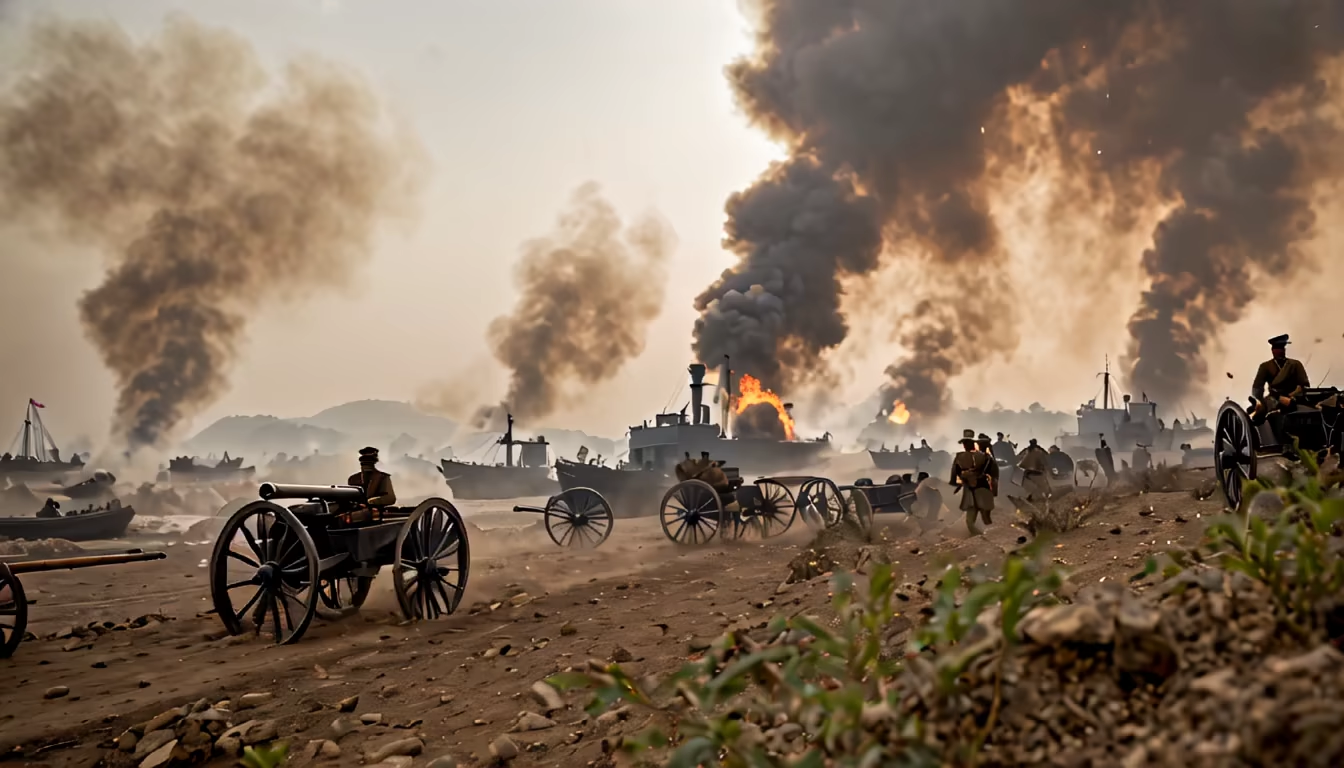
Prompt: 25 Chinese beauty, eternal elegance, eternal beauty, eternal elegance; Eternal charm, eternal sophistication, eternal charm; Eternal gesture, endless grace, eternal grace; Immortal style, eternal skill, eternal chic; Endless temptation, eternal charm, eternal class; Eternal charm, eternal sophistication, eternal elegance; Timeless sophistication, timeless charm, and timeless elegance at the Forbidden City in Beijing, China.
Style: Cinematic


Prompt: Capture the essence of the Arrow Incident in a compelling image prompt, illustrating the dispute over the seized Chinese-owned ship 'Arrow,' as British claims of smuggling clash with Chinese denials, escalating tensions to a boiling point with neither side willing to back down in 1856.
Style: Cinematic
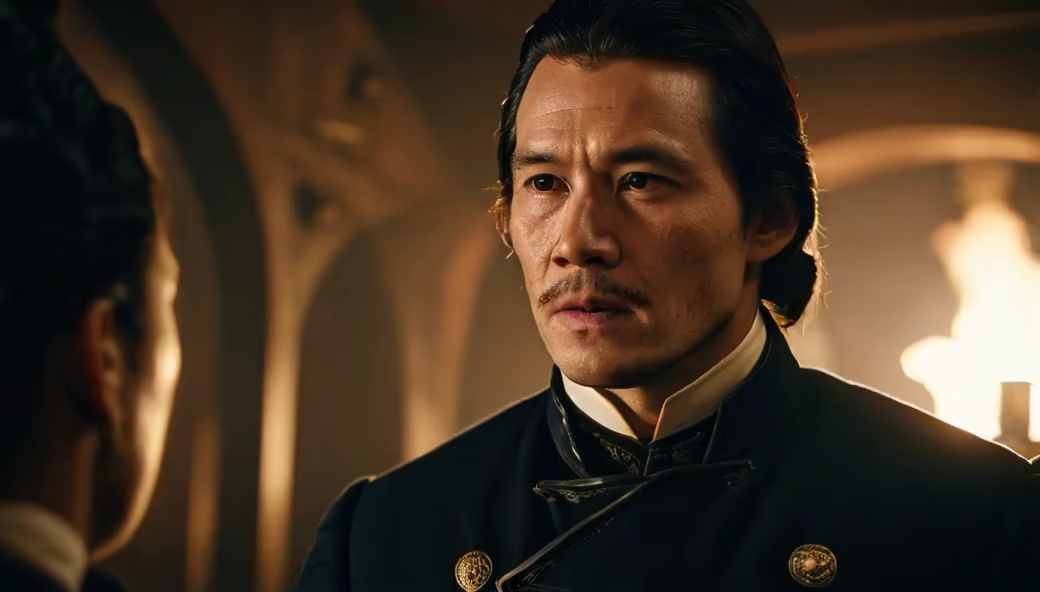
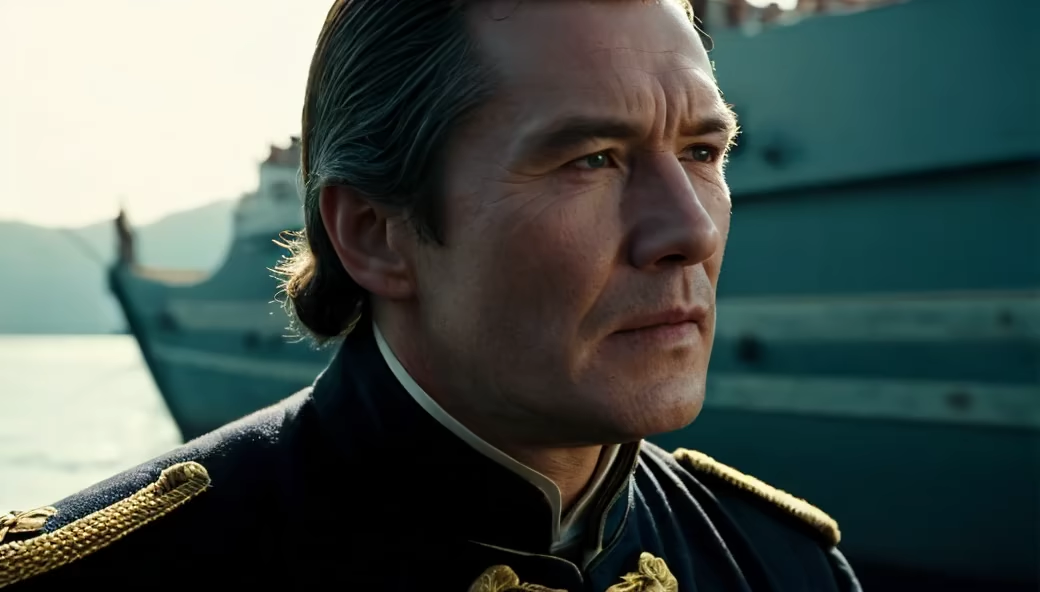










Prompt: Capture the historical turning point in 1856 with an evocative image prompt, illustrating the death of French missionary Auguste Chapdelaine in Guangxi province as the pivotal event that provided France with the pretext to join Britain in its war against China.\"
Style: Cinematic


Prompt: The image presents a stark contrast between the technological prowess of the British navy and the traditional Chinese naval vessels in a dramatic naval battle setting. On one side of the scene, towering and formidable British steam-powered gunboats dominate the waters. These sleek and modern vessels are equipped with advanced artillery and steam-powered engines, emitting plumes of smoke as they advance with precision. On the opposing side, traditional Chinese junks, adorned with vibrant colors and intricate designs, sail valiantly. However, they appear antiquated and comparatively smaller, relying on sails and oars for propulsion. Their cannons, though strategically positioned, pale in comparison to the firepower of the British warships. The waters are turbulent, reflecting the intensity of the conflict. Smoke billows from cannon fire, creating a haze that shrouds the vessels engaged in the confrontation. The scene captures the disparity in technology and firepower between the British steam-powered gunboats and the traditional Chinese junks, illustrating the clash between modern innovation and traditional naval strategies during this historical period of the Opium Wars.
Style: Cinematic

